1lumen selects and reviews products personally. We may earn affiliate commissions through our links, which help support our testing.
Cyansky HS3R review
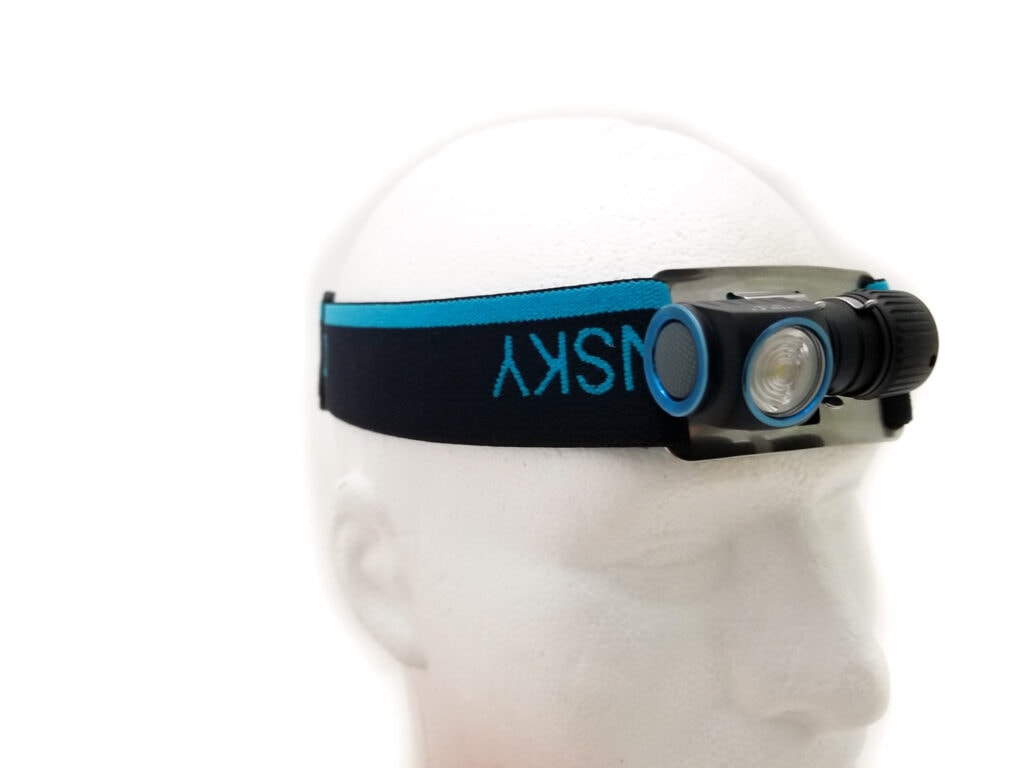
Cyansky HS3R specifications
| Brand & Model | Cyansky HS3R |
|---|---|
| Flashlight category | Best headlamp |
| LED | 1*Osram Duris P9, 2*Everlight 2835 red LEDs |
| Max. output | 1100 lumens |
| Max. beam distance | 135 meters |
| Max. beam intensity | 4556 cd |
| Battery config. | 1*16340, 1*CR123A |
| Onboard charging | Onboard USB type C. Included battery has a USB-C port |
| Modes | 5 |
| Blinkies | Strobe |
| Waterproof | IP68 |
| Review publication date | November 2022 |
Introduction:
Cyansky has been busy, cranking out cool new headlamps. I reviewed their first headlamp, the Cyansky HS6R and after using it quite a lot over the last year, found it to be pretty close to the perfect headlamp: versatile, bright, with flood, spot, high CRI, and red aux lights. It was a bit chunky though, and I think Cyansky knew that since the next release was the HS5R, an 18650 right angle headlamp.
We all know small headlamps are pretty popular, and size is no longer a limiting factor for output thanks to advances in LEDs and optics. Well, fast-forward and now there’s a new one, and it’s quite a bit different than the latter two, namely it’s stinking tiny.
Enter the HS3R.
This is a 16340 size right angle light that can double as a headlamp, but size isn’t too much of a detriment performance-wise, with 1100 advertised Lumens out of the main LED. It’s almost an analog of the TrustFire MC12 as well and features a fresnel lens style optic. There’s a magnet in the tail, and it has red auxiliary LEDs for low-light tasks. Pretty standard headlamp fare, so let’s see how it does.
Package quality.
Like the other Cyansky products, the HS3R comes in a retail package with a hang tag. The familiar blue and white colors, feature blurbs, and specs are accounted for here, and it’s basically identical to the first edition. Inside, the light rides in a molded plastic carrier with all the accessories efficiently arranged underneath. Here’s what you get:
- Cyansky HS3R
- 2 spare o-rings
- Lanyard
- USB A to C charging cable
- 700 mAh 16340 USB type C rechargeable battery (loaded in the light)
- User manual
- Warranty card
- Headband
This is a proper assortment of accessories, including everything needed to get going. The battery has integrated charging, which is nice, but I suspect most folks will use the onboard charging. I wish Cyansky would do what Acebeam and Fenix have done and put foldable lids on the bottom of the trays so the accessories don’t spill out when you open it.
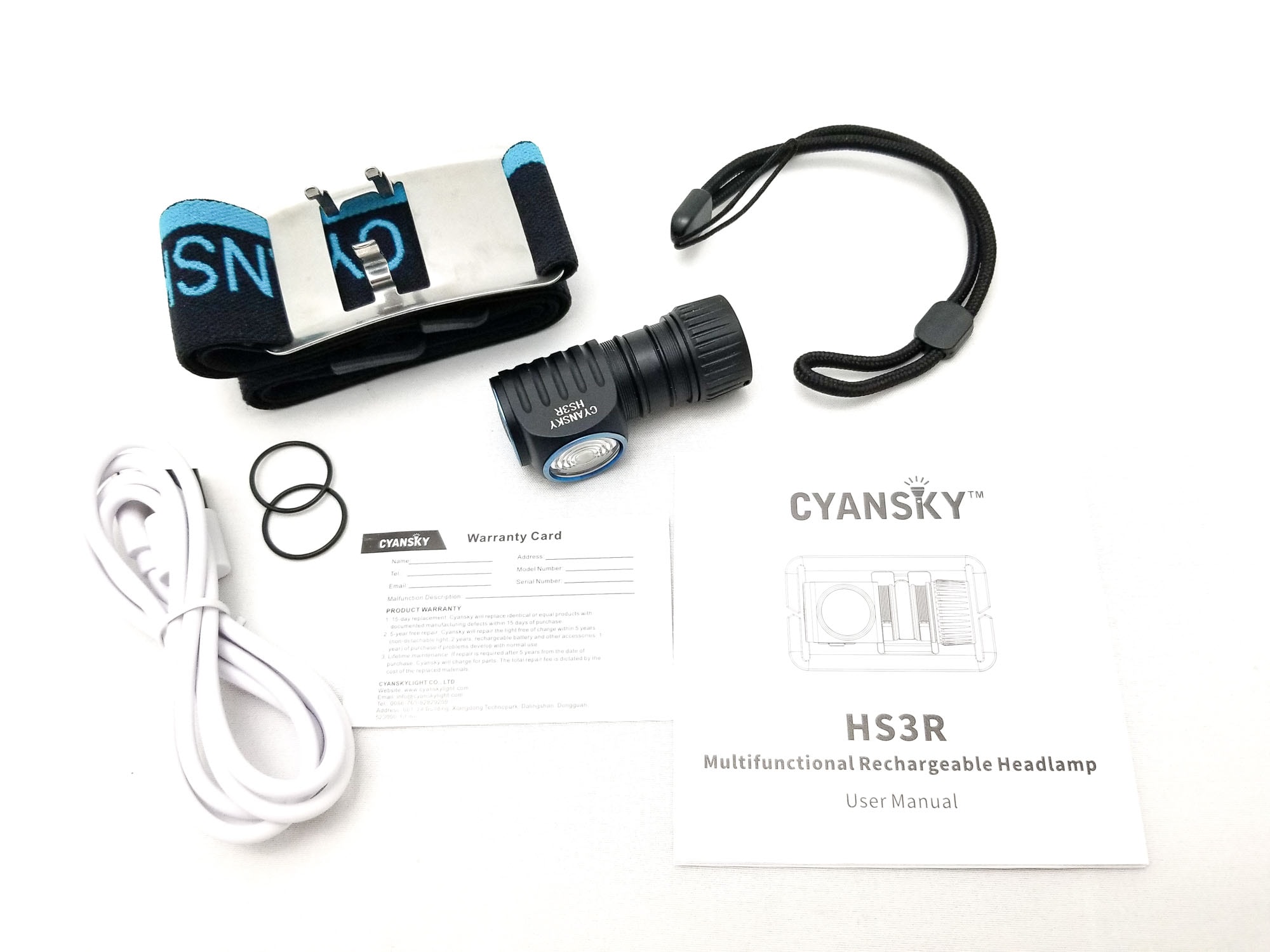
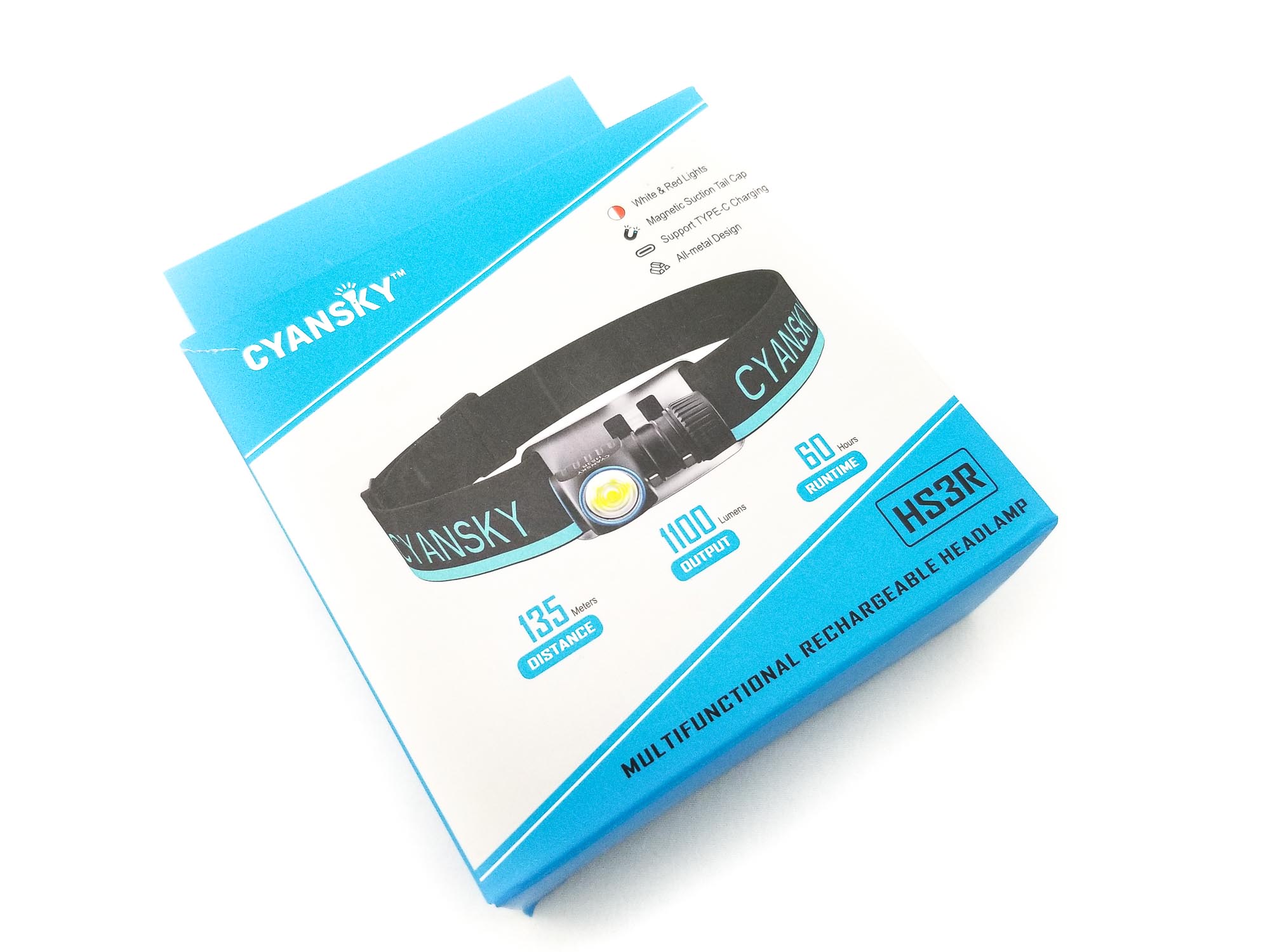
Flashlight in use
The HS3R is a right angle multipurpose light you can use as a hand held flashlight or mounted to a headband for headlamp duty. There’s a striking resemblance to the larger HS5R: the tailcap, switch, and head are basically the same, albeit some bits are a bit larger. It does either tasks very well, and with a magnetic tailcap and the red LEDs, it’s extremely versatile. The small size and light weight are great for portability and comfort when used as a headlamp. It’s pretty small and basically disappears in my hands, so it’s a bit tricky to handle, and I resorted to grasping it like a pencil by the tube since using it in the pistol grip was…awkward. My sausage fingers had trouble with getting a good grip.
The body has no knurling, just some grooves the headband clips interface with, and the tailcap has some vertical grooves for gripping and to aid in unscrewing the tailcap. The top-mounted e-switch is easy to find. It’s set in a blue aluminum bezel and has aux LEDs under the translucent boot that show battery state when clicked once. It’s grippy and has a nice click feel, but it is a bit mushy for my taste and almost vague with the clicks.
The headband is similar to the one on the HS6R. It’s a generously wide stainless plate with clips that the light fits into. It’s pretty stiff and I had to push a bit to get it to seat in the clips, but once mounted, it’s very solid and unlikely to become dislodged under normal use. Removing the light was pretty easy, but required some force. The light can be rotated 90 degrees up or down when mounted, so that was a plus.
Overall, it’s comfortable to wear, and the wide headband is pretty much identical to the HS6R (almost 2.5 inches wide) gripped my head well. The magnetic base is pretty stout and grips a vertical surface very well, (Cyansky says it’s good for ‘magnetic dangling’), but didn’t cling to the side of a 21700 battery. There’s a single lanyard hole, but it’s more like a lanyard pin hole. It’s tiny and threading the lanyard was an exercise in futility. Cyansky, can you make the hole bigger please? Tail standing is no problemo.
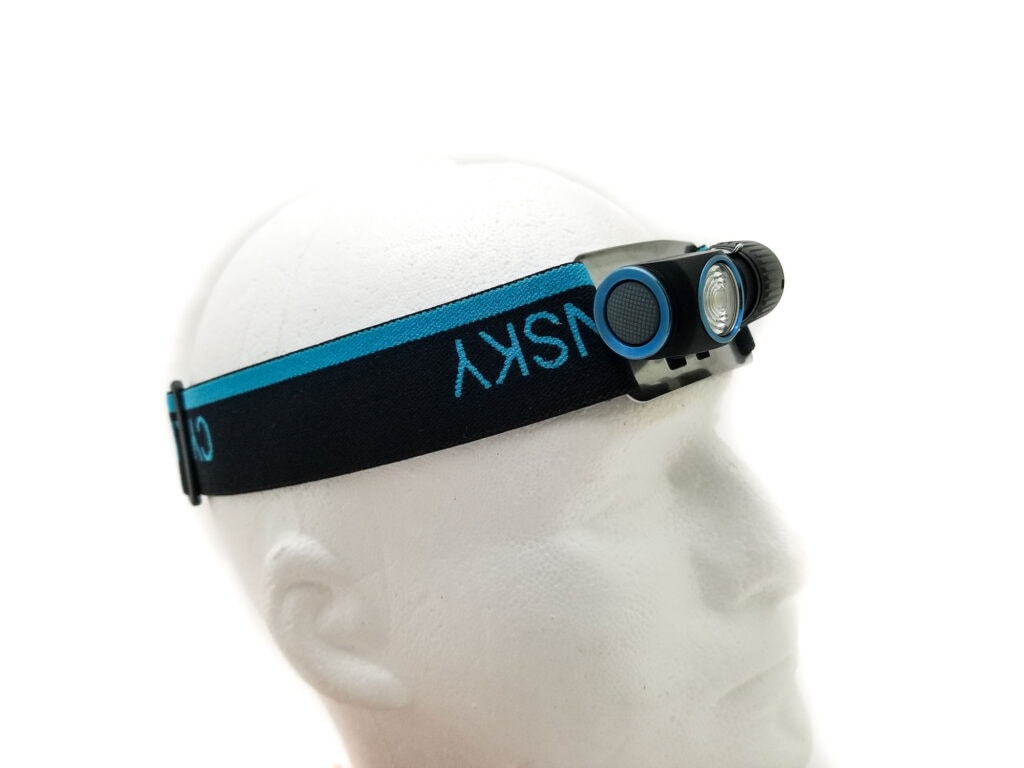
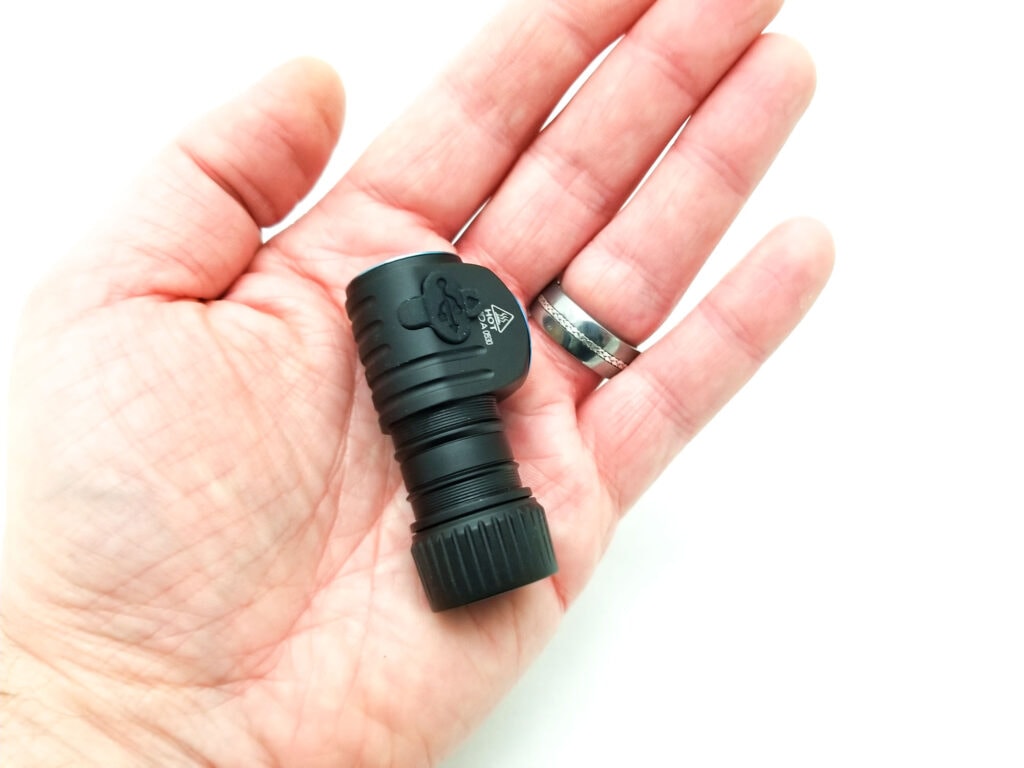
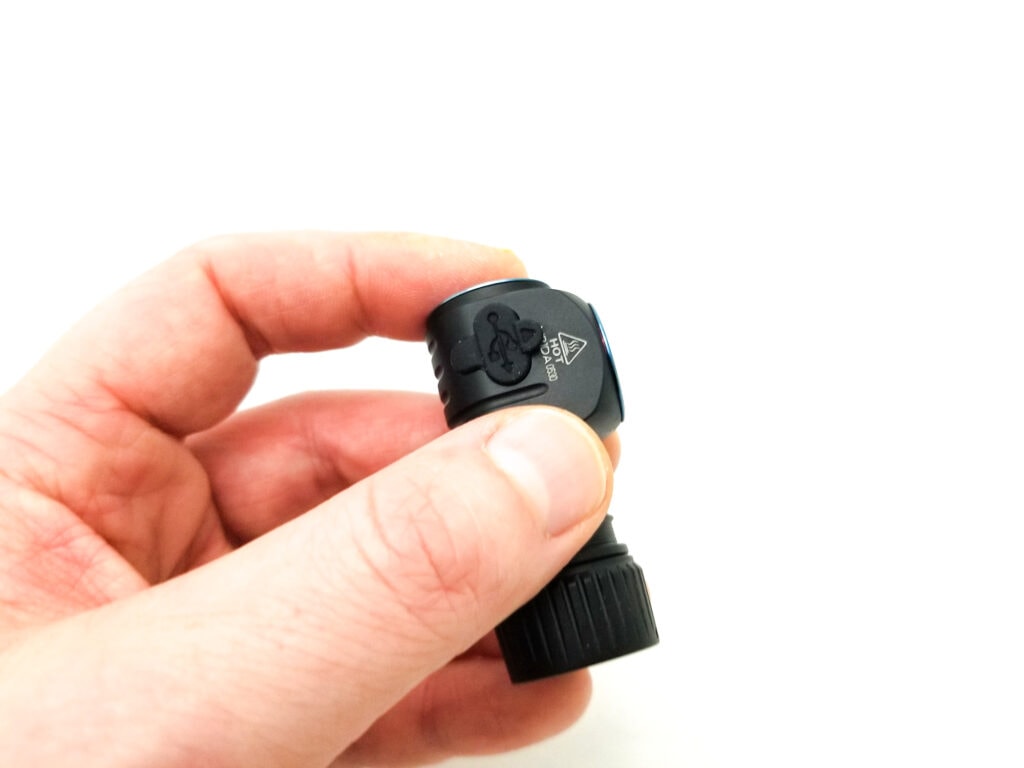
Build Quality, and Warranty
All the Cyansky lights I’ve reviewed have been very good quality with great fit and finish and sturdy construction. Cyansky products aren’t necessarily budget lights, and the HS3R retails for about $60 US. That’s a bit steep for a small headlamp, but you’re getting a lot for your money. The HS3R, despite the diminutive size, is no less good quality and it’s what I’ve come to expect from Cyansky. The HS3R is milled from 6061 aircraft aluminum, and the machining is flawless with no defects or blemishes.
The attention to detail is also good. The part fit-up is excellent with no anomalous gaps or misaligned pieces in the optic, bezels, etc. I was a bit disappointed to see that Cyansky omitted a glass lens over the plastic optic. That’s kind of necessary on a headlamp since if it’s used the way it’s supposed to, it will get knocked around a bit and the plastic optic can get scratched or chipped. Good luck getting the optic off since it’s pressed (and probably glued) in.
The charge port cover fits pretty flush with the body and while the lift tab can be dislodged by accident, didn’t open the cover. The finish is advertised as type III HA, and it’s black with a matte finish I’ve come to love. It’s reminiscent of Convoy or Acebeam’s anodizing. It’s also flawless with no defects or thin spots.
The tailcap comes off for accessing the battery, and the threads are surprisingly sturdy rectangular cut units. They’re fully anodized for lockout and are super smooth. There’s a single o-ring sealing the tailcap, and the USB port cover provides a nice seal.
Cyansky says it’s good for IPX8 ingress protection, so no worries if you find yourself outdoors in a downpour, fall into a lake whilst wearing your HS3R, or if your HS3R finds its way into the wash (or toilet). There’s a single gold-plated spring in the tailcap. It’s press fit and captured by the tailcap and the magnet is secured underneath. The driver has a flat contact with interference bars on either side for reverse polarity protection, but that means you’re stuck with button top batteries.
Cyansky backs up their products with a great warranty every bit as good as the competition: 15 days no hassle free return and refund for defects, 5 year (60 months) free repairs for factory or manufacturing defects, and a limited lifetime warranty with covered labor for repairs (customer covers parts) after 5 years.
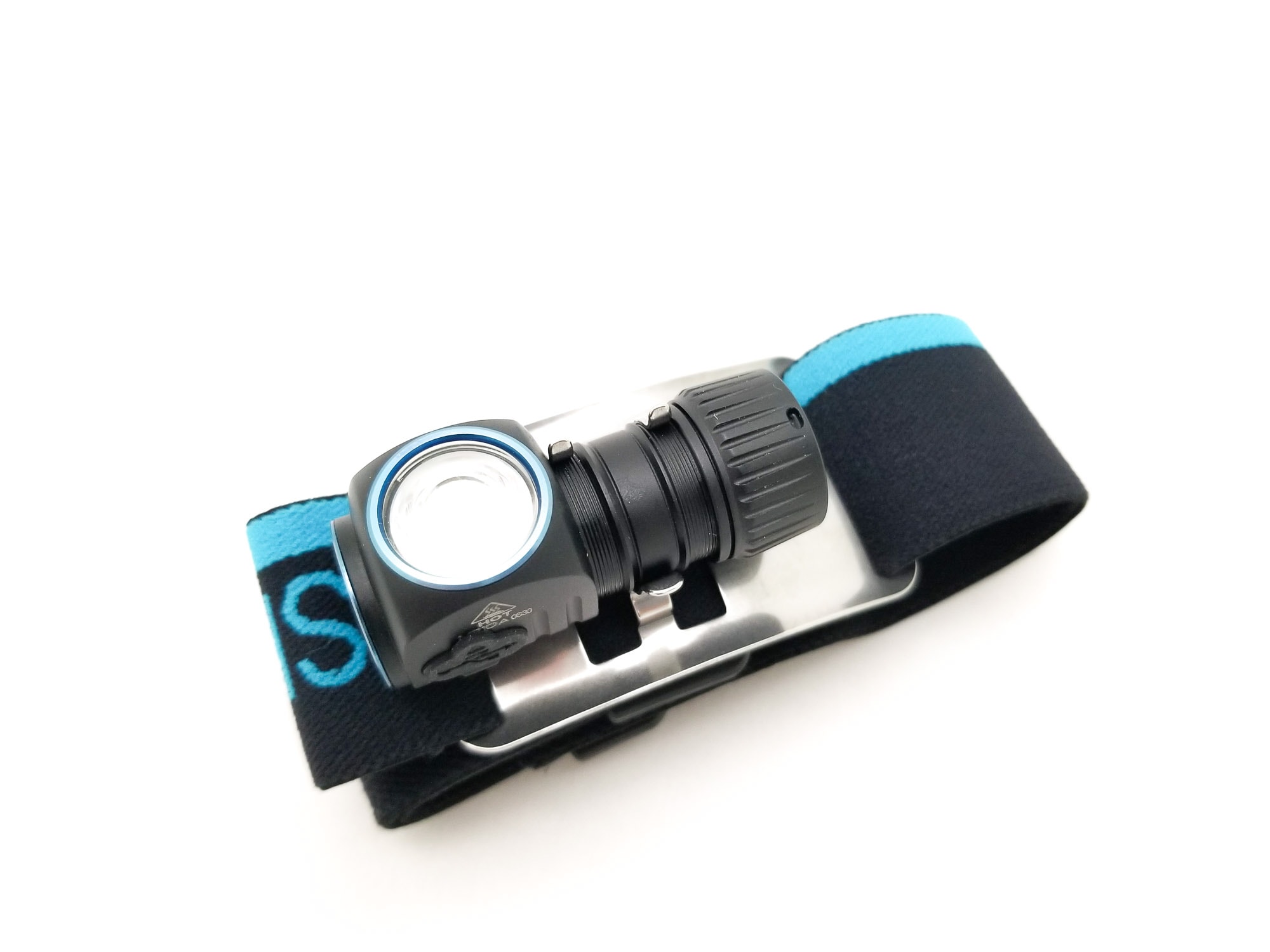
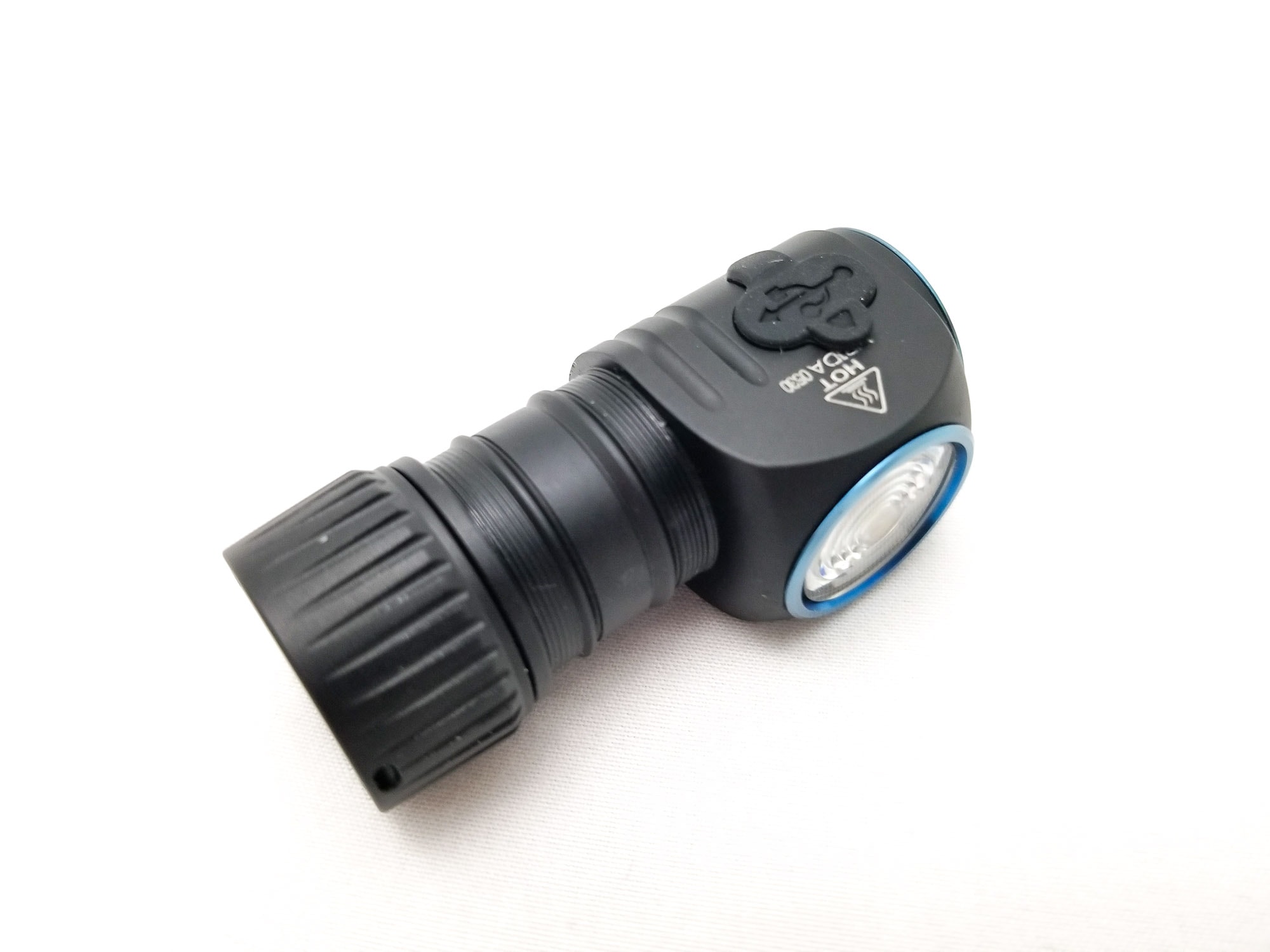
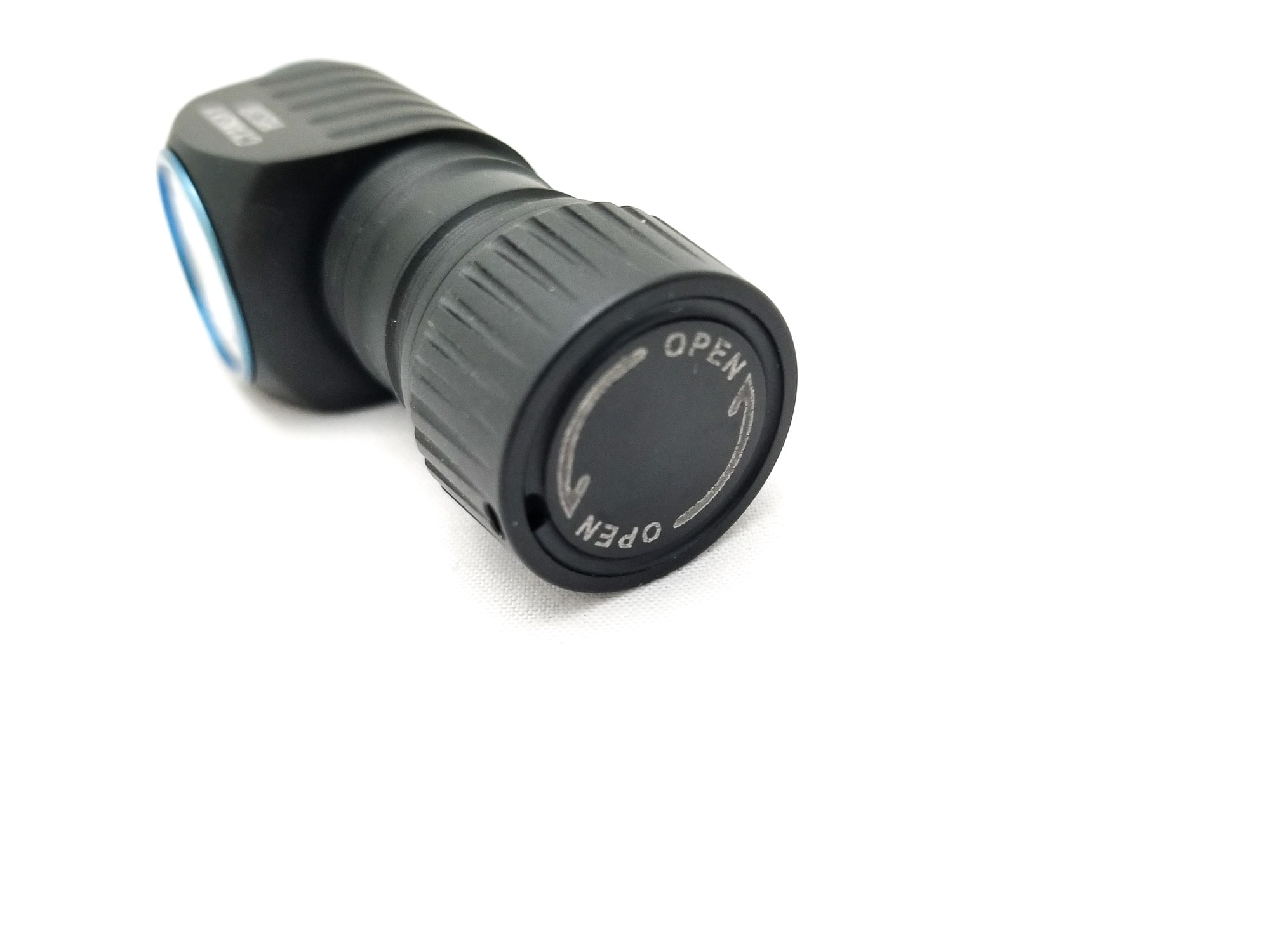
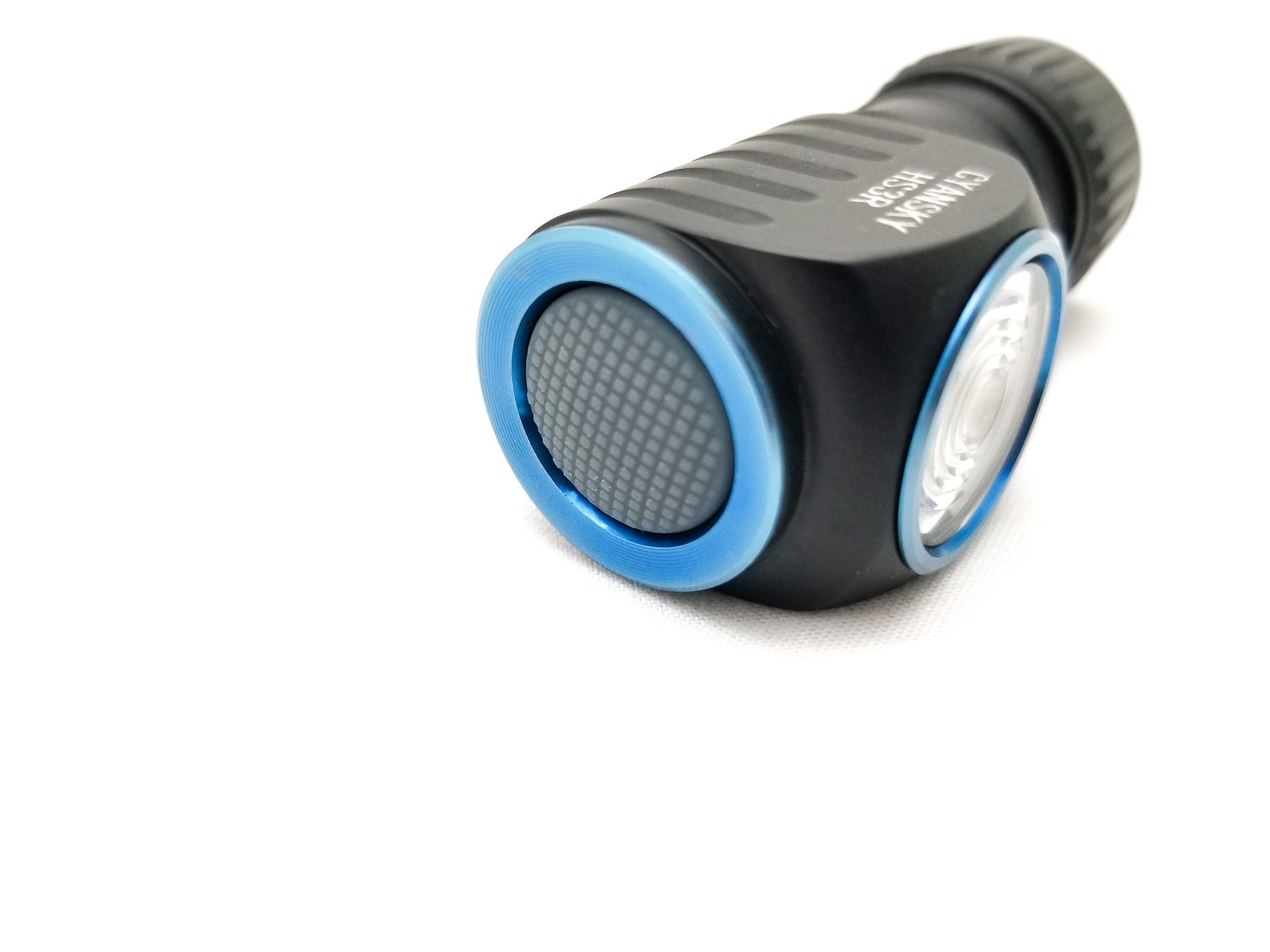
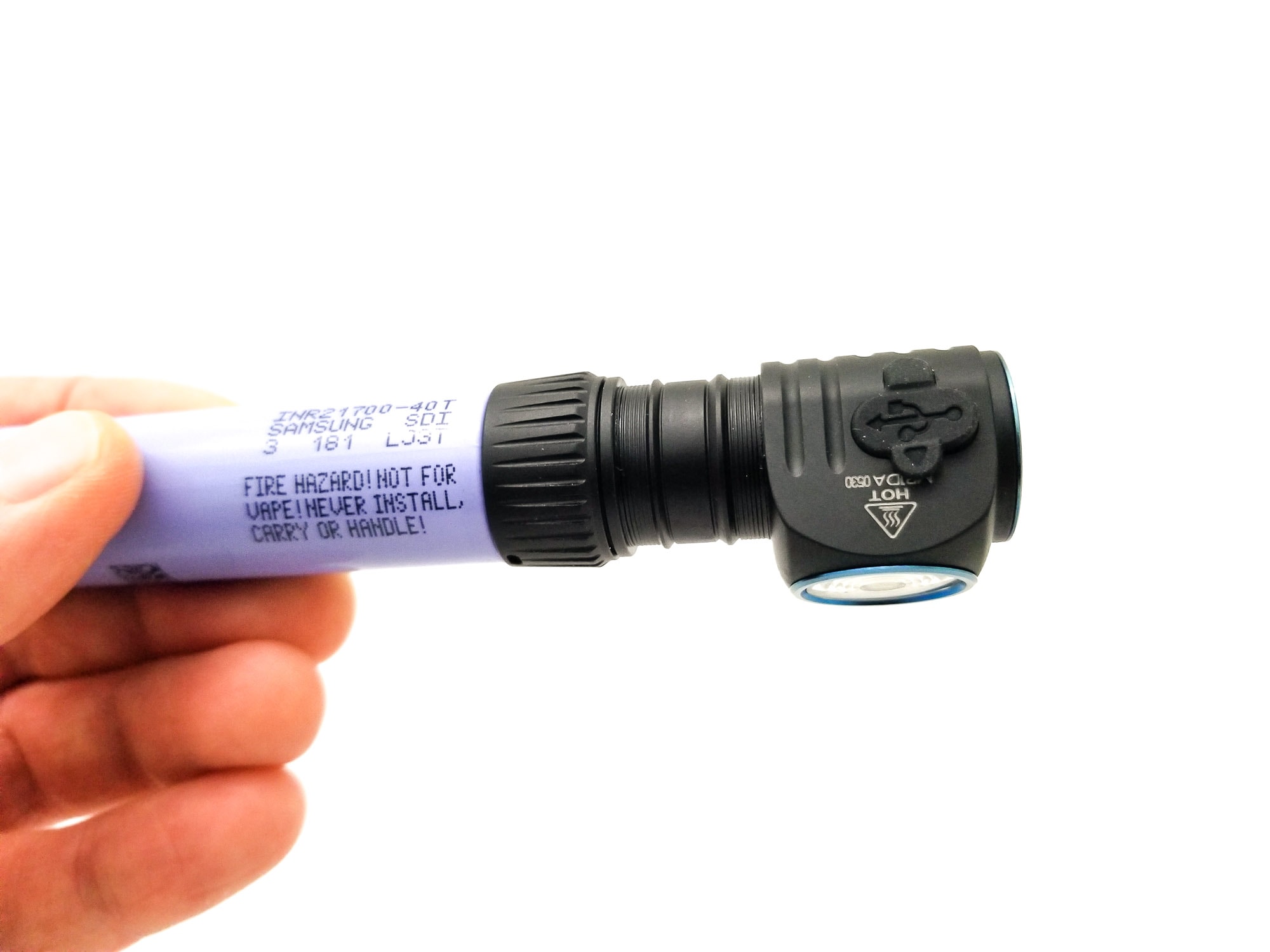
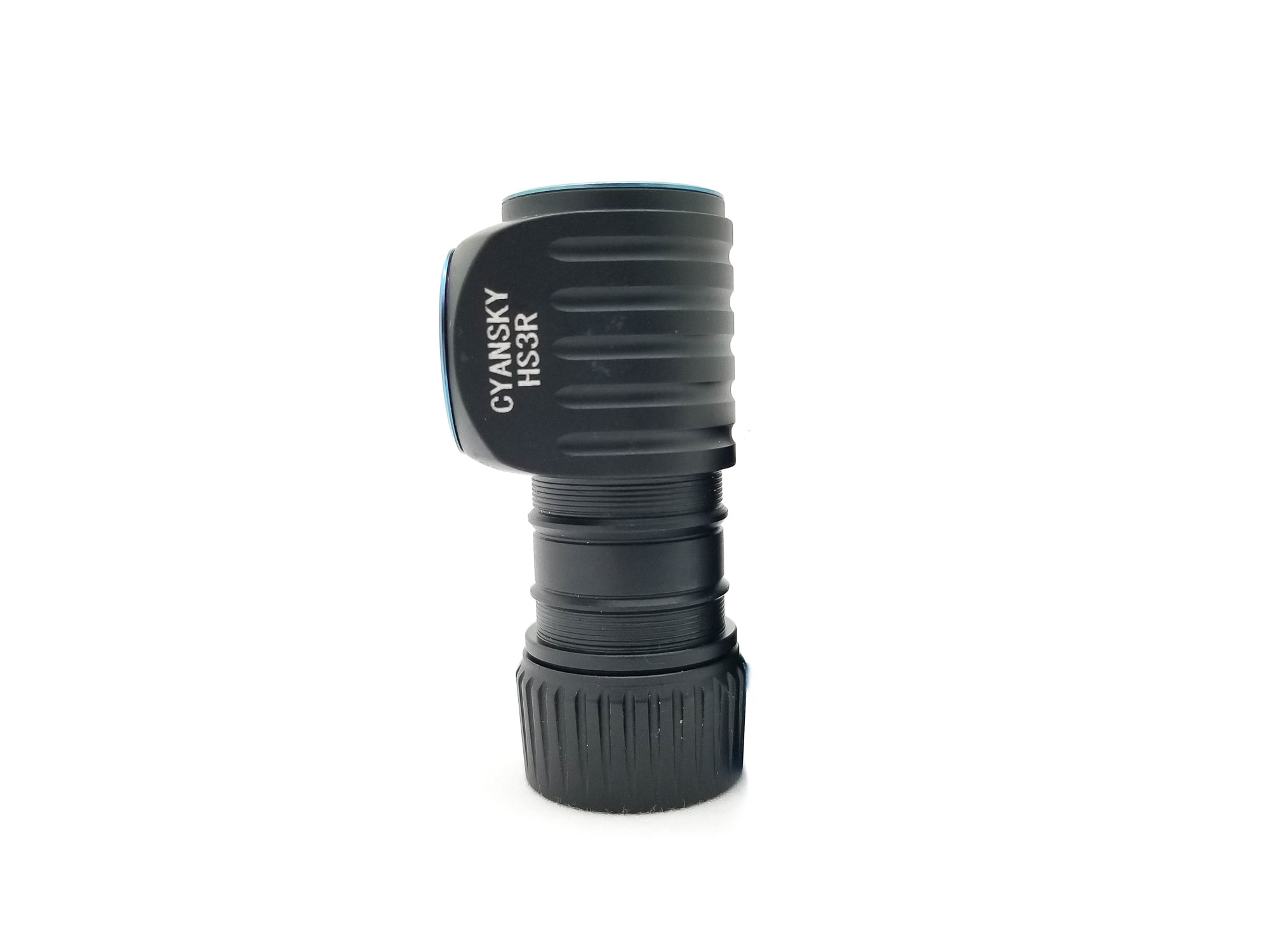
LED, Lens, Bezel, Beam, and Reflector
The LED is a familiar one that can be found in a few lights and headlamps here and there, but it’s nowhere near as popular as Cree or Luminus products. It’s the Osram P9 Duris, the formal designation being the GW PUSTA1.PM. It’s a 3737 size LED, so a bit bigger than a XP-L footprint. It’s a 3 volt LED and is available in 3000K to 6500K at around 70 CRI. It’s nothing special, but a good LED for lower power applications.
In the HS3R you get the 6500K version, which is fine for a headlamp. On Turbo 1 meter from the sensor, the Opple Lightmaster Pro has the P9 coming in at 6147K and a very low 57.6 CRI Ra. The duv is skewed blue/green at 0.0158. Accompanying the P9 are a pair of Everlight 2835 SMD LEDs for the red light. These are found in the HS6R and the Fenix E-lite. These LEDs sit behind a fresnel-style optic set in a cool blue aluminum bezel that extends about 0.5 mm above the optic that affords some protection, but it really needs a protective lens. Plastic scratches and gets dingy quite a bit faster than hardened glass.
The beam is really good for general-purpose use. Cyansky says it’s a 15-degree spot with an 80-degree flood and I believe it. There’s a diffuse hotspot blending into the spill that extends quite a ways out for good side illumination. It looks a bit like the beam from the Lumintop FWAA with a bit more throw. The red LEDs are surprisingly bright and spread light out a lot for up close use only. You can tell that there’s two of them behind the optic, so the diffusion isn’t perfect. Eco mode is pretty low and great for when red light isn’t needed.
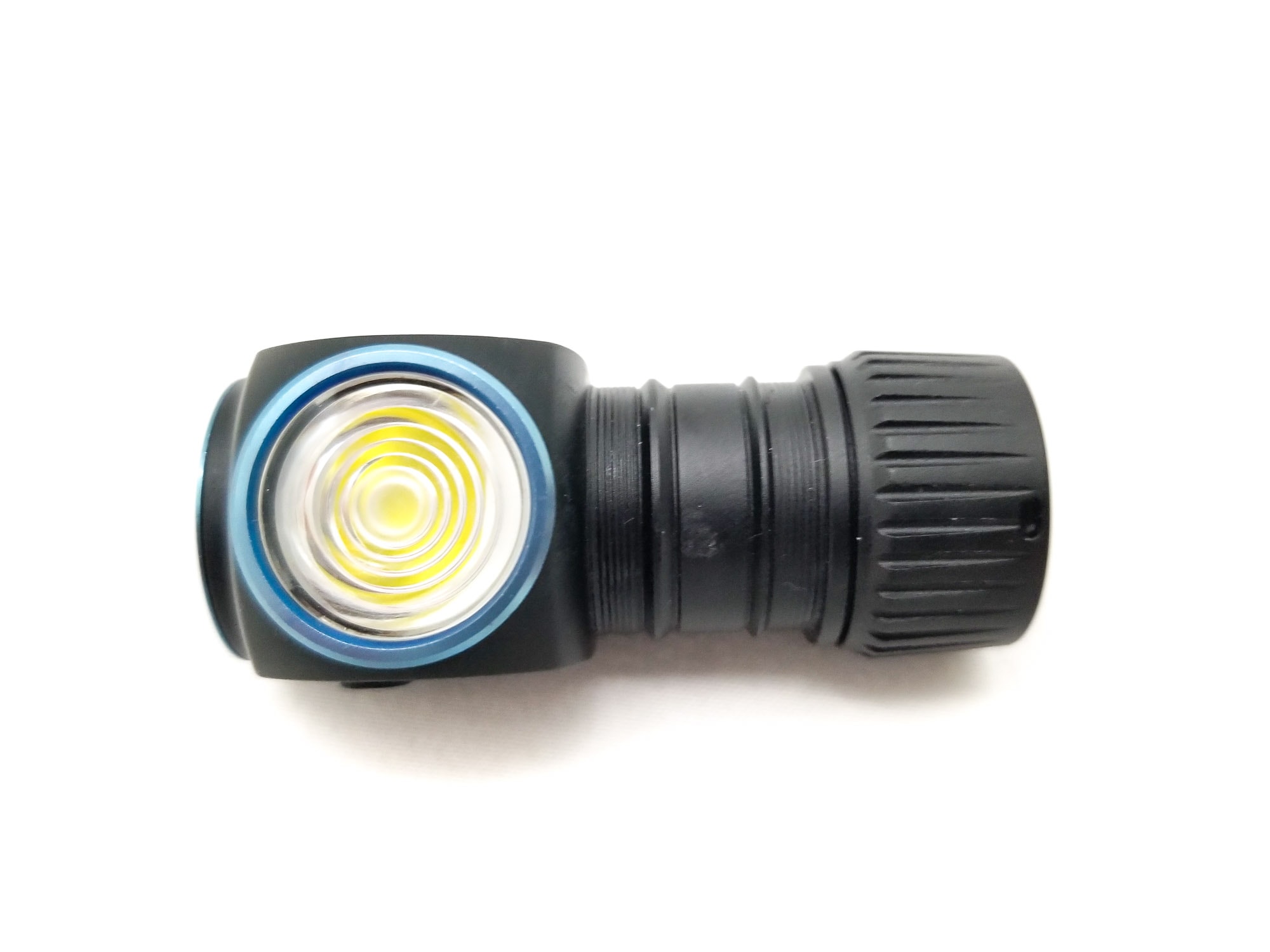

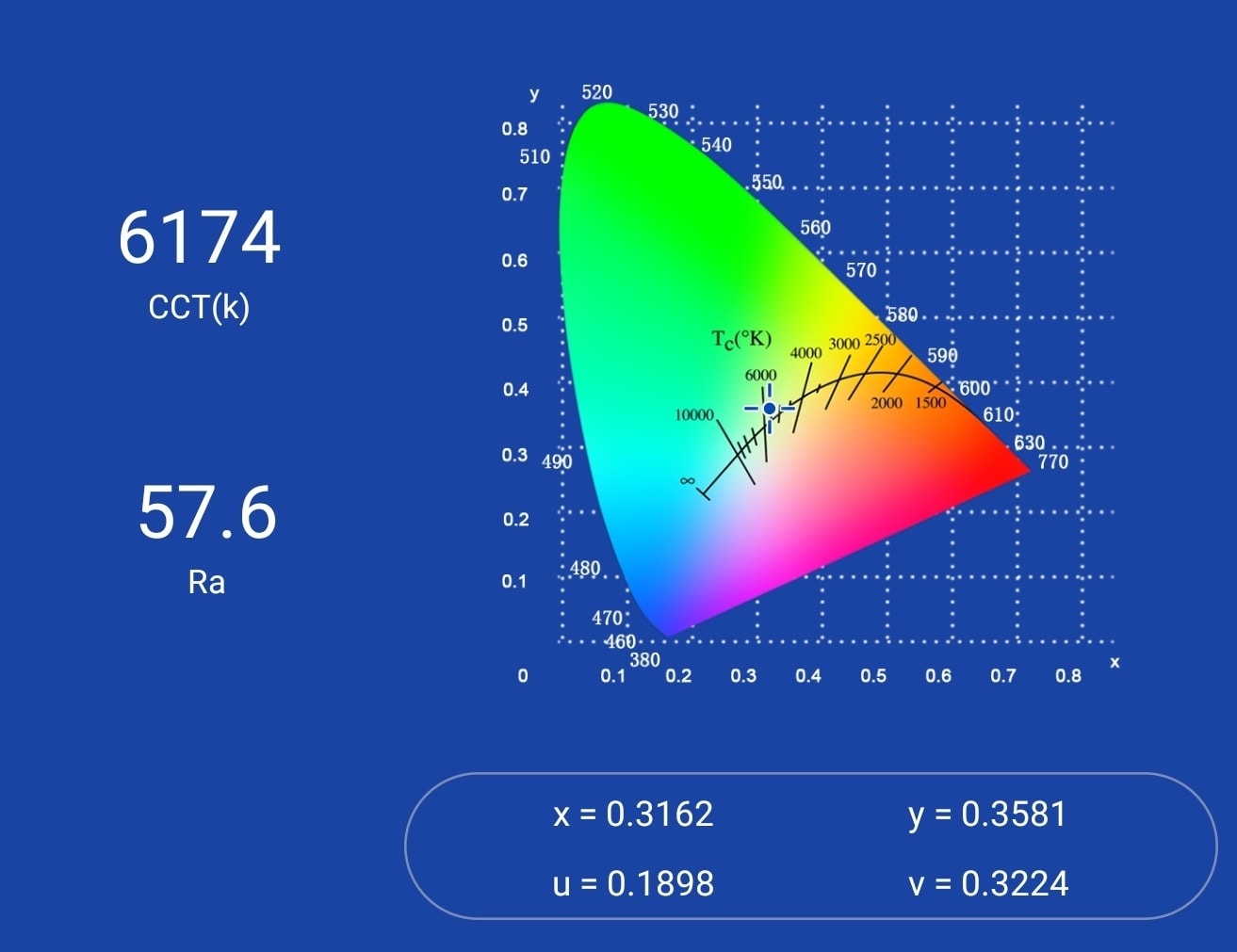
Dimensions and size comparison
Dimensions:
| Dimension | Millimeters | Inches |
|---|---|---|
| Length | 57 mm | 2.2 in |
| Head diameter | 23 mm | 0.9 in |
| Body diameter | 27 mm | 1.0 in |
Dimensions are rounded to the nearest millimeter, and to the nearest tenth of an Inch.
Weight:
| Weight | Grams | Oz. |
|---|---|---|
| Without battery+headband | 74 g | 2.7 oz |
| With battery+headband | 94 g | 3.3 oz |
| Without battery no headband | 40 g | 1.3 oz |
| With battery no headband | 60 g | 2 oz |
Weight is rounded to the nearest gram, and to the nearest tenth of an Oz.
The HS3R is impressively lightweight, and that’s expected since it’s pretty small.
Headlamp size comparison with its competition
I compared the HS3R to some other right-angle lights that are also headlamps (or can be used as headlamps). Note the size difference between the Brinyte HL16 and the HS3R. Both use the 16340 battery, but the HS3R is quite a bit smaller.
Group 1 top to bottom: Cyansky HS6R, Cyansky HS3R
Group 2 let to right: Brinyte HL16, Fireflies PL47G2, Fireflies PL47G2 Mu, Brinyte HL18, Cyansky HS3R
Group 3 left to right: Fenix e-Lite, Cyansky HS3R, Lumintop FWAA, Fenix E09R, Sofirn SP10 v3
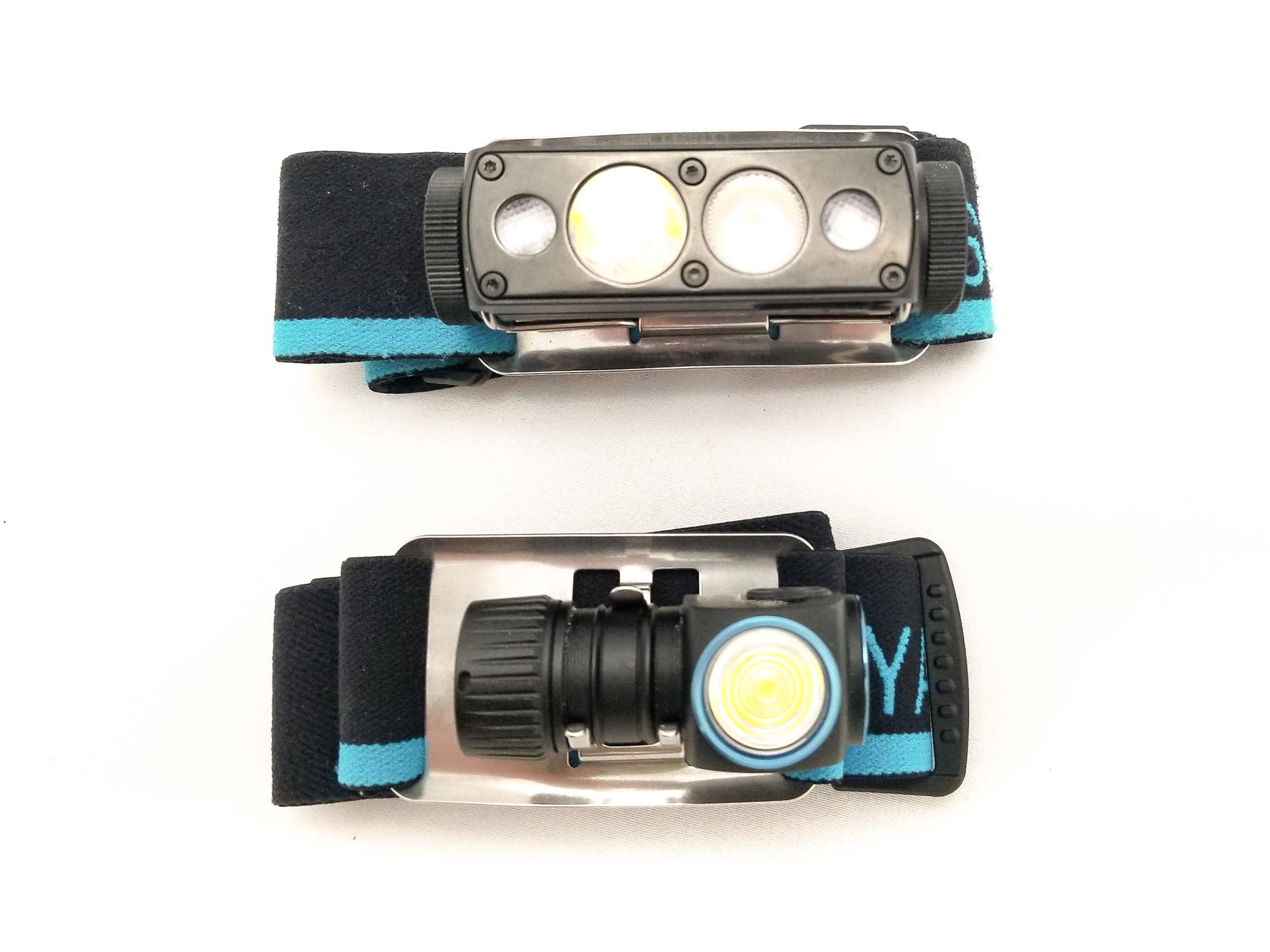
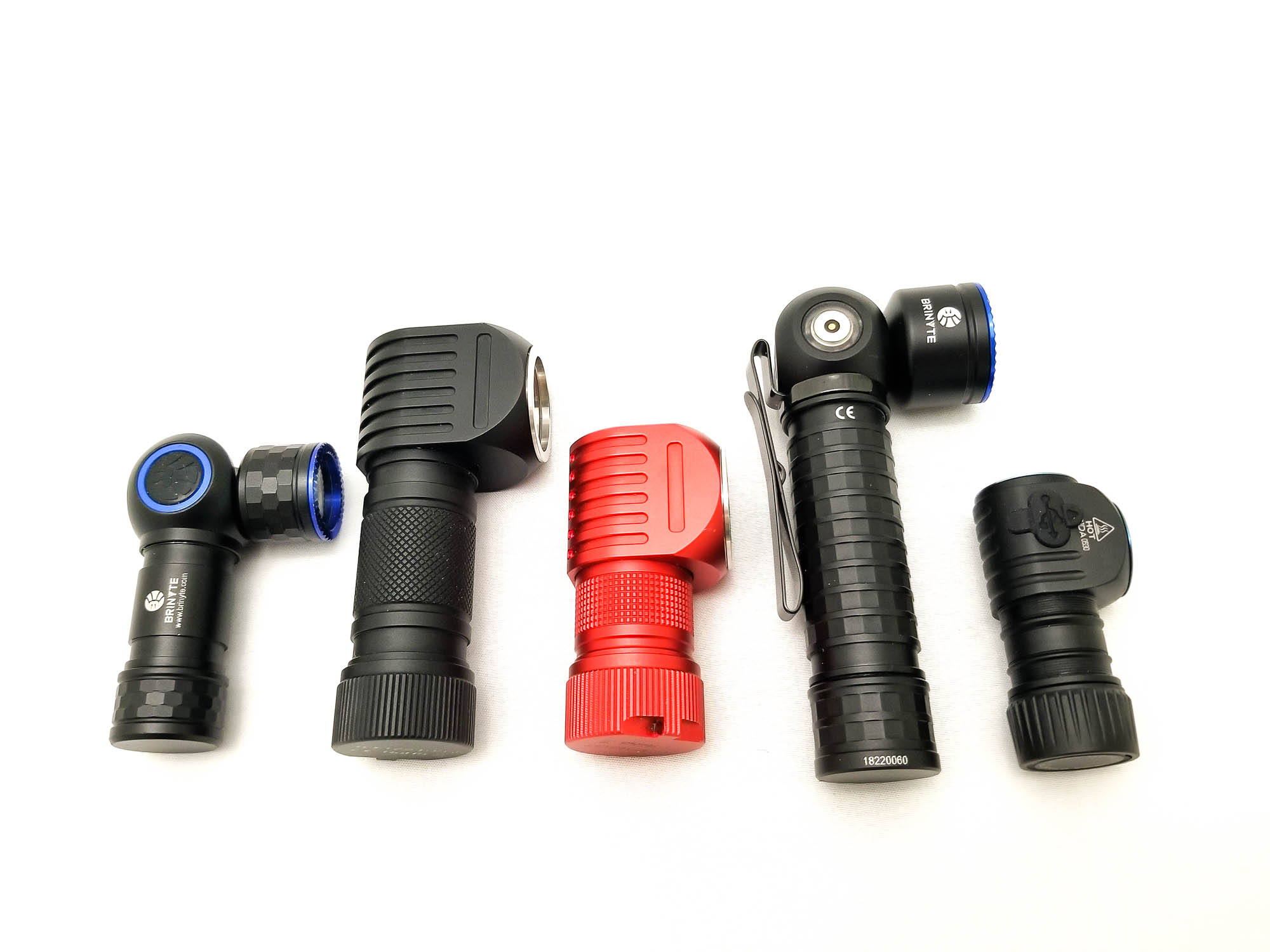
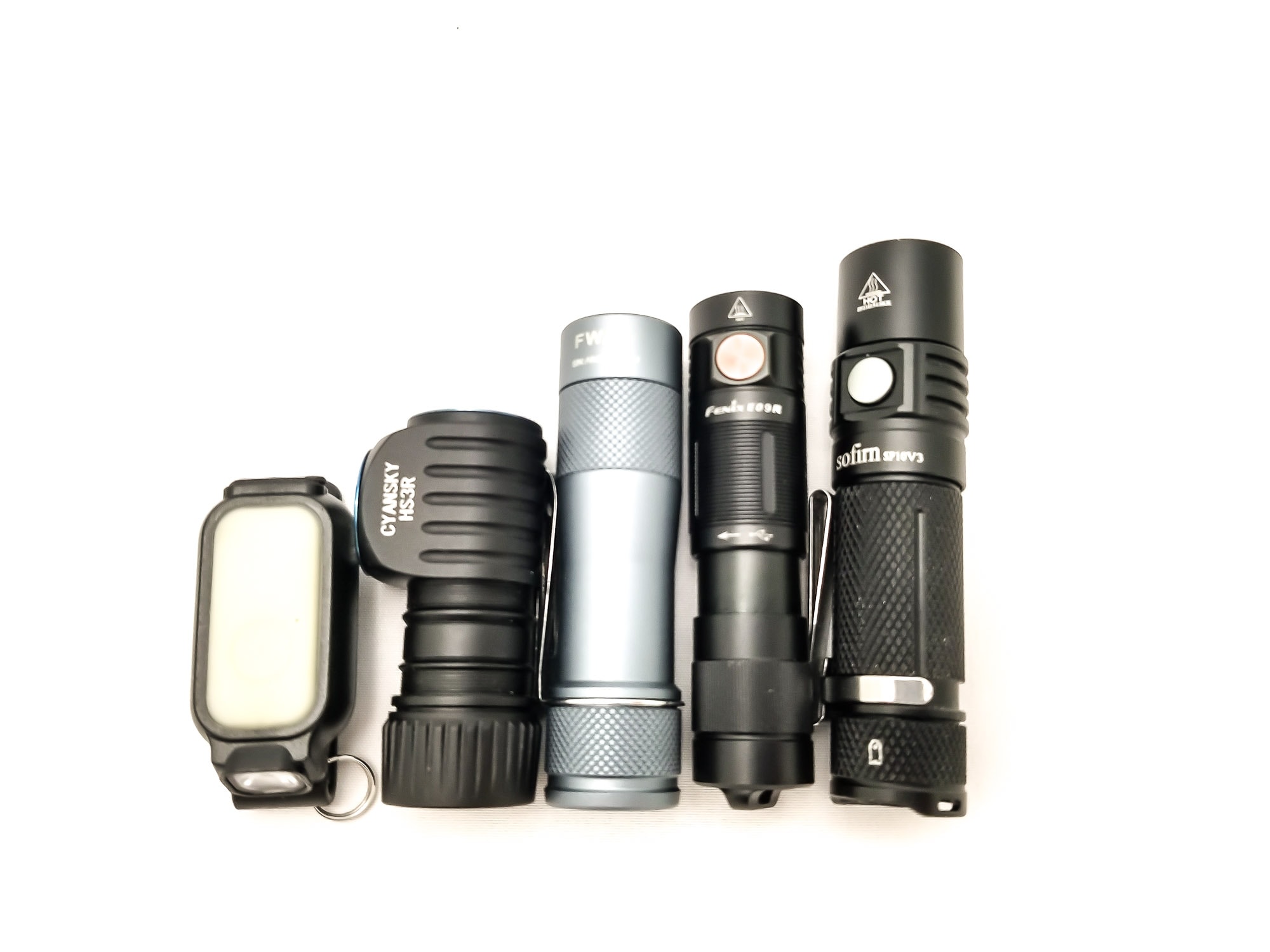
Driver & User Interface:
The driver is probably a buck driver, or at least a boost driver since you can use the HS3R with a 3 volt CR123A battery. Since the LED needs more than 3 volts to run, I’m leaning towards a buck driver, or a buck diver with a direct-drive channel for Turbo and the CR123A battery. Depending on the configuration, it doesn’t bode well for CR123A compatibility, but we’ll see.
The UI is 5 standard modes plus an Eco mode, a strobe, and the red LED function. It’s pretty straightforward with press-and-hold to turn on and off, but there’s some quirks.
Main Modes: Low, Medium, High
Secondary Modes: Red light, Beacon, Eco
From OFF:
- Click and hold switch: Turns on in the main mode set last mode (except High mode which is not memorized)
- Click and hold switch for more than 3 seconds: Turns on in the secondary mode set (red, red beacon, Eco) in whichever mode you were in
- Single click switch: Battery check
- Double click switch: Lockout
From ON:
- Single click switch: Switches modes
- Press and hold switch: Turns off
- Double click switch: N/A
- Press and hold switch for more than 3 seconds: Switches to secondary modes. Clicking again switches to the red mode beacon and clicking again activates the Eco ultra low mode. Pressing and holding for 3 more seconds returns to the main mode set (Low, Medium, High)
- Single clicking in either mode turns the light off
Mode memory:
- Yes, last mode memory in either the main or secondary modes. High mode is not memorized though.
Low voltage warning:
- The side switch indicator LED shows battery state. Solid green: < 80%, blinking green 80% to 50%, solid red 50% to 25%, blinking red < 25%. When the battery reaches 3 volts, the brightness steps to low, and the light will blink 3 times every 3 minutes and the indicator LED will blink rapidly.
Strobe/blinkies
- Red mode has a blinky/beacon mode
Lock-out mode:
- Double click from off activates electronic lockout. Double click to disable. The aux LED will light up and the light blinks twice in Low when locked. You can also unscrew the tailcap ⅛ turn to lock out.
Shortcuts:
- None
PWM
- None
Additional info: Although I’m generally okay with this UI, there’s some quirks to it. First, I would have liked to see Eco mode as part of the main mode group, or at least as a separate shortcut and ditto with the red mode(s). Having an Eco mode is important on a headlamp, and having to cycle through two red modes to get to it is a bit annoying. This is why I like dual switches on headlamps with multiple LED functionality. I guess it was difficult to implement that on the HS3R with just a single switch to work with so I’ll throw Cyansky a bone here. However, the main gripe is the press and hold for on/off, and that the two mode memories commingle, so whichever mode you turn the light off in is the one it starts in when turned on again. Turn off in red secondary mode, turns on in red secondary mode, etc. This can be an issue since you might not want to start in red mode or Eco mode, and the only way to get back to the main modes is by clicking, holding, and wanting for the light to turn off then on again. Sheesh. Also, double click to lock is a bit strange since that’s usually associated with Turbo for most all lights these days. Cyansky…how about triple or quad click for lockout?
Batteries & Charging
The small Cyansky HS3R takes an equally small li-ion battery, the 16340. This is a 16 mm x 34 mm battery, and although it’s not the smallest cylindrical li-ion battery around, it’s still pretty small. Cyansky bundles the HS3R with their BL1607U 16340. This is a 700 mAh capacity (2.5 Wh) button top with integrated micro USB charging. It’s got a protection board as well for over and under-discharge protection, which is nice. I’m not complaining one bit, but I don’t know why they included an integrated charging battery since the light has integrated USB type C charging. Cyansky’s specs say the HS3R is also compatible with a CR123A primary cell. This adds a lot of versatility in the event you don’t have a charger (and have a light that takes CR123As like the Cyansky K3). However, this comes at a slight output and capacity penalty, and have you priced CR123A batteries lately? You’re limited to button tops, but that’s fine. I tried an Energizer CR123A and it worked fine, but the switch indicator blinked red for low battery. Only Low, Medium, and High modes were available.
The integrated charging works awesome for a small light. I was seeing about 900 mA to 1 A, and that should charge the battery in about an hour (Cyansky says 1.5 hours). The micro USB charging produced 334 mA, so quite a bit less than the USB type C, and I really don’t see any need to use the micro USB unless that’s all you’ve got. If using the battery’s charging, there’s an LED indicator under the top insulator that’s red for charging and green for fully charged. I put the cell in my VapCell S4+ and it’s about 30 milliohms for the internal resistance. On the internal charging, the termination voltage was around 4.1 volts.
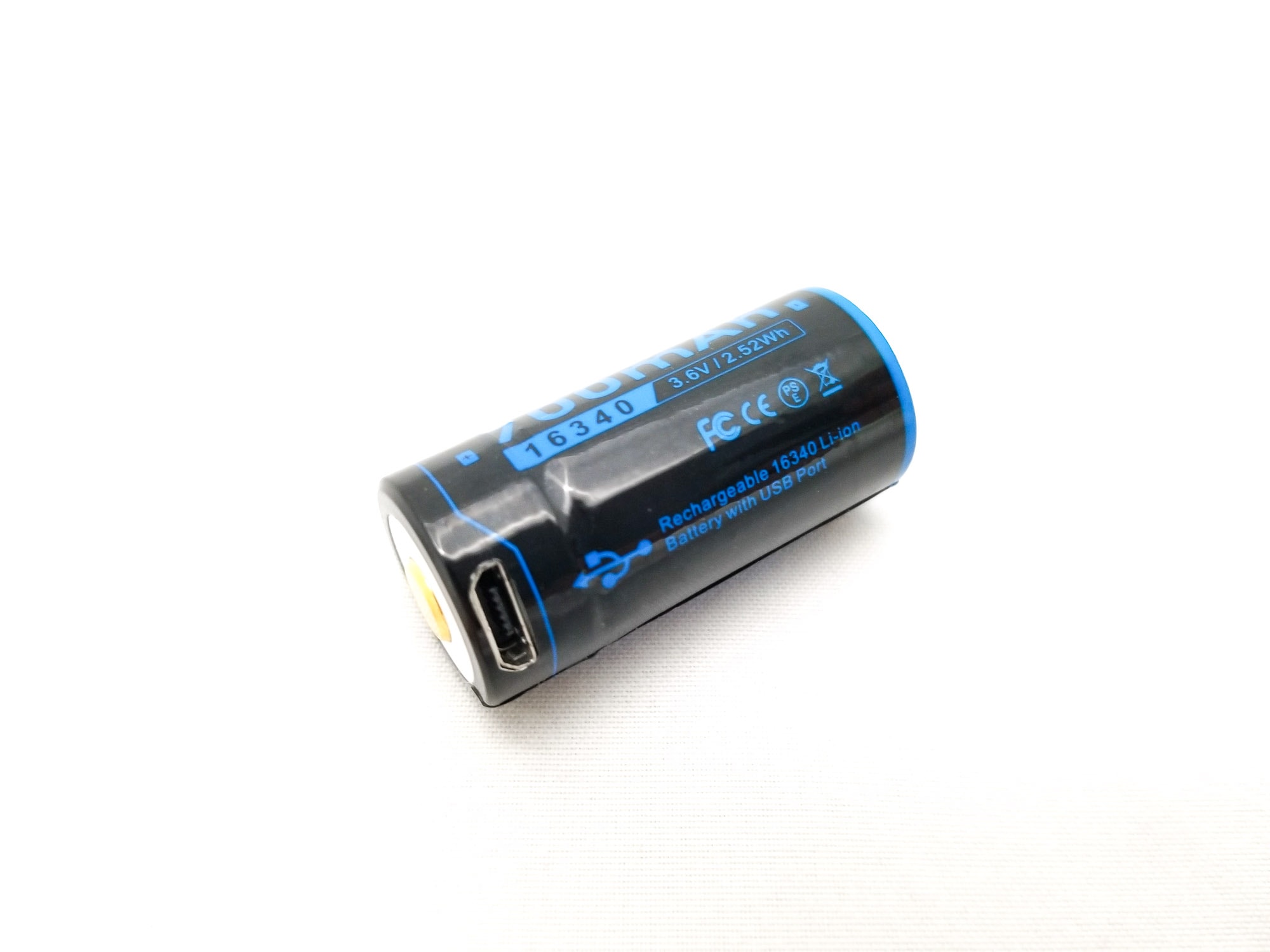
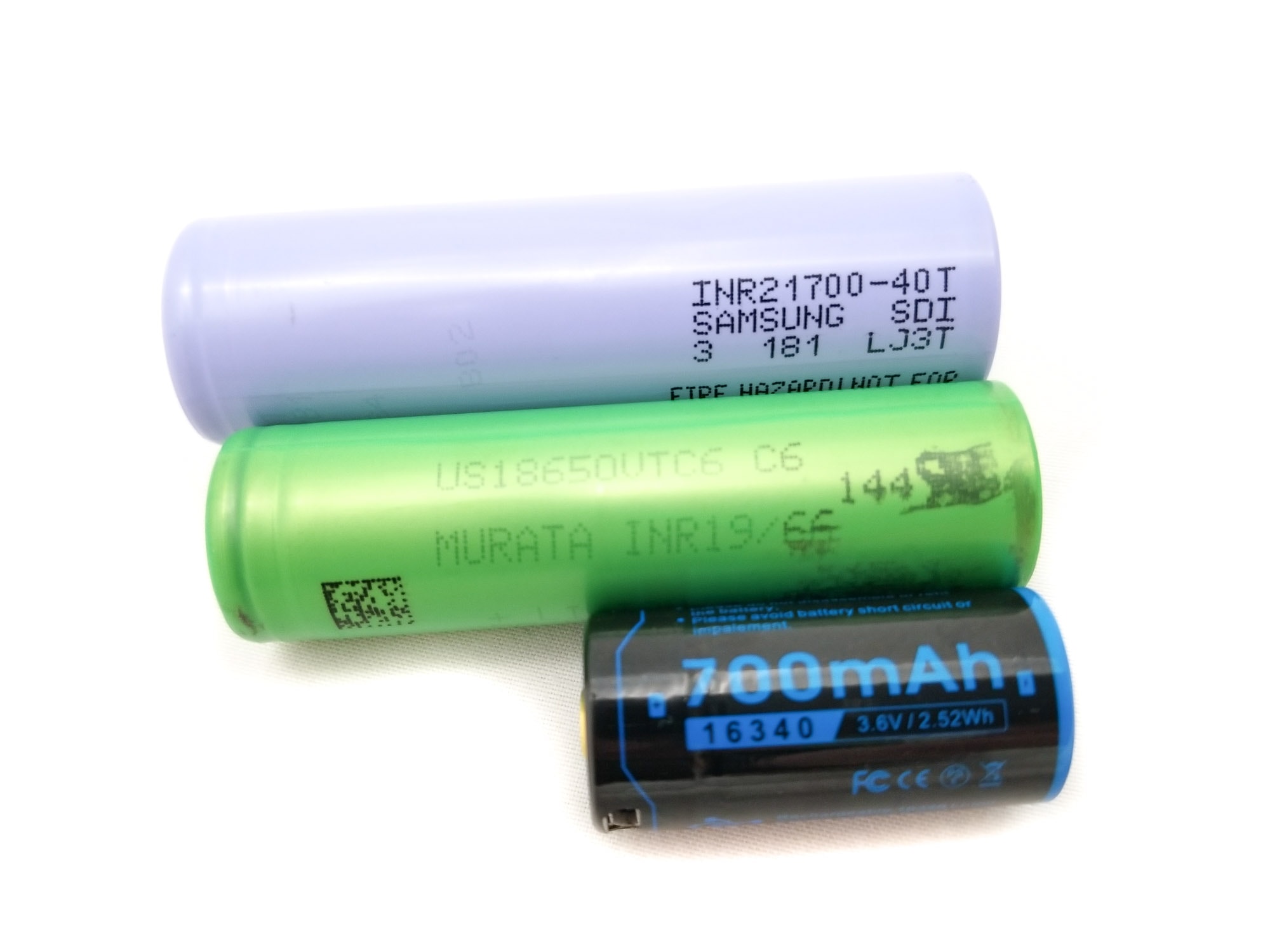
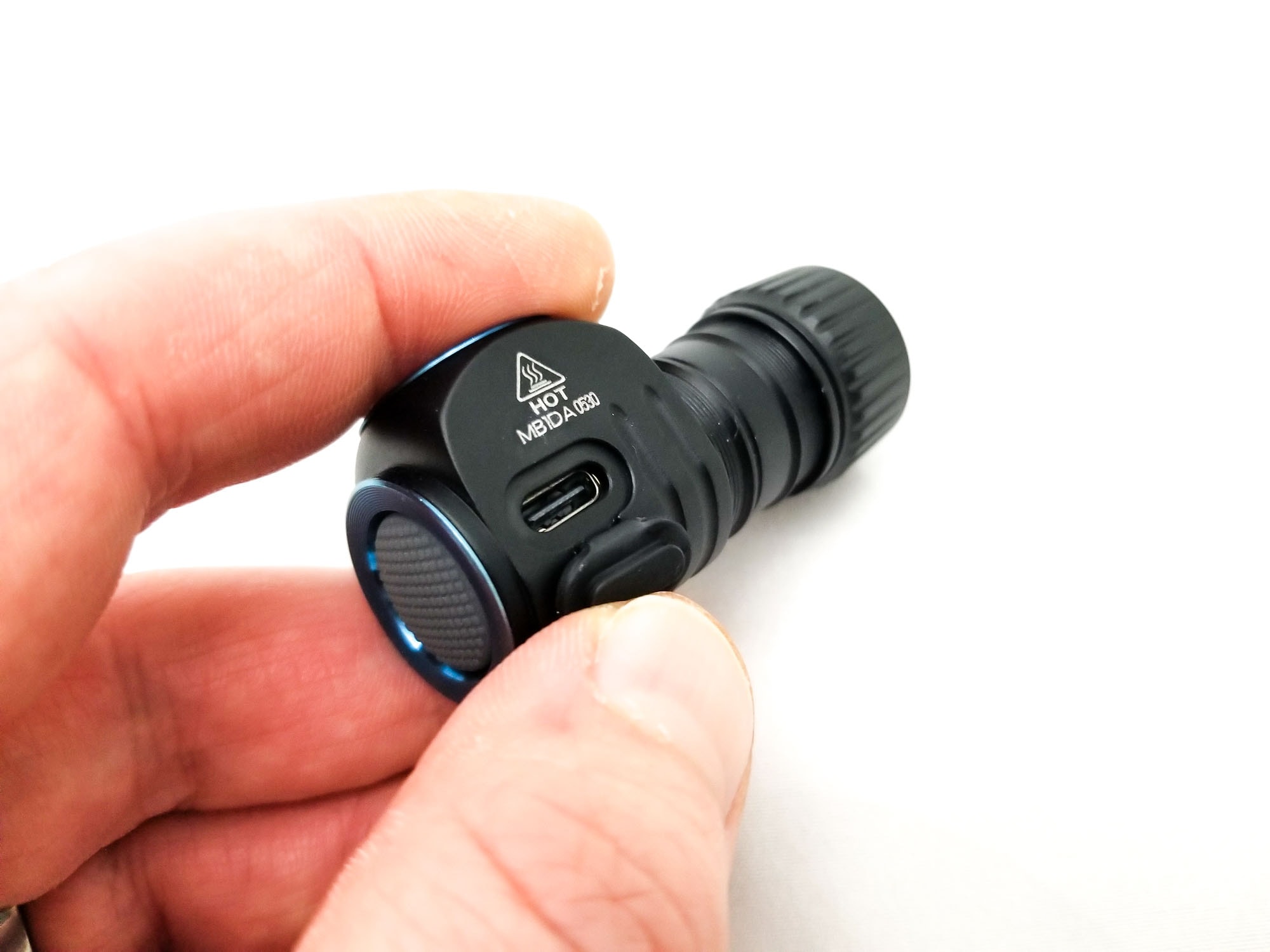
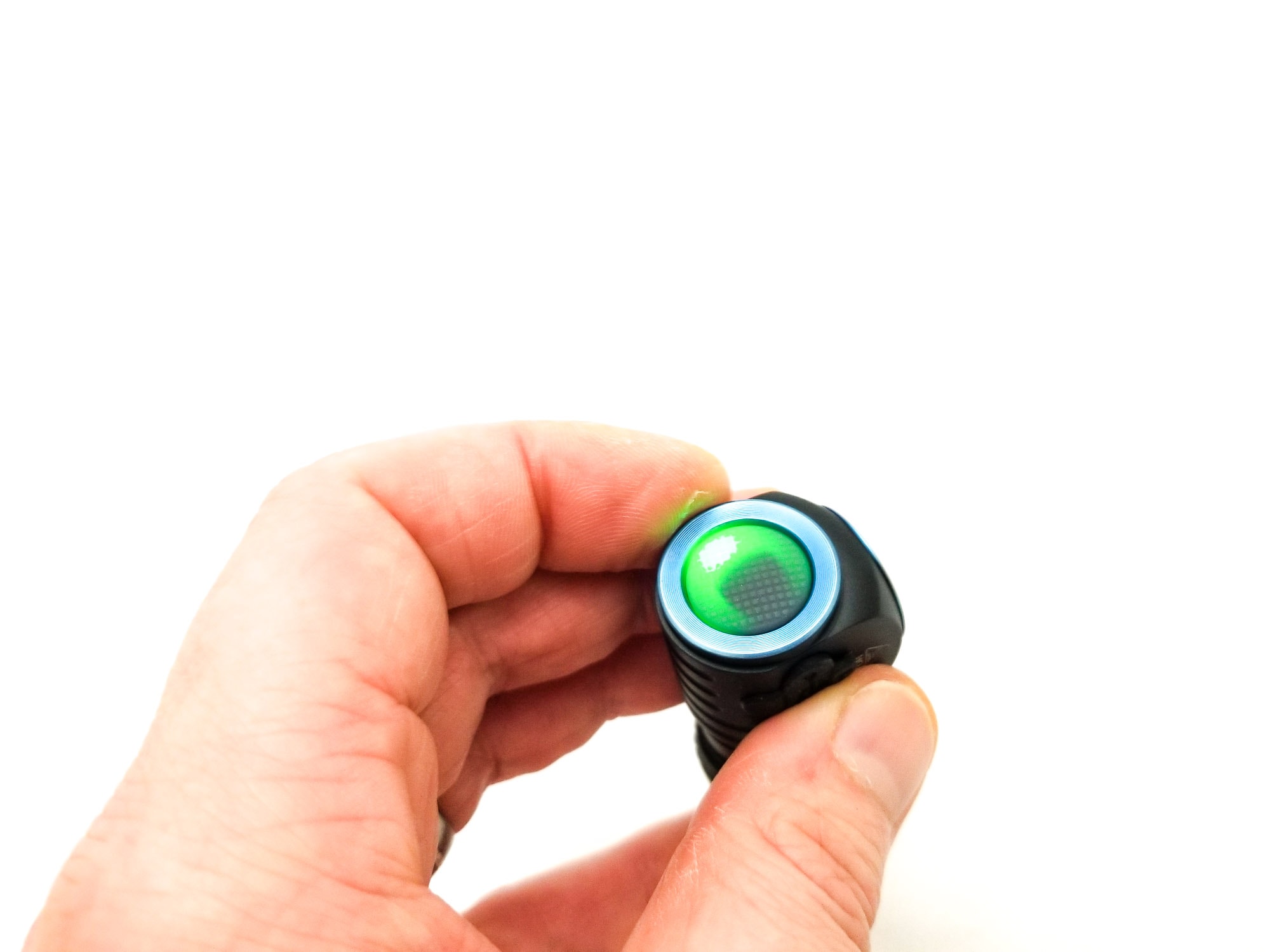
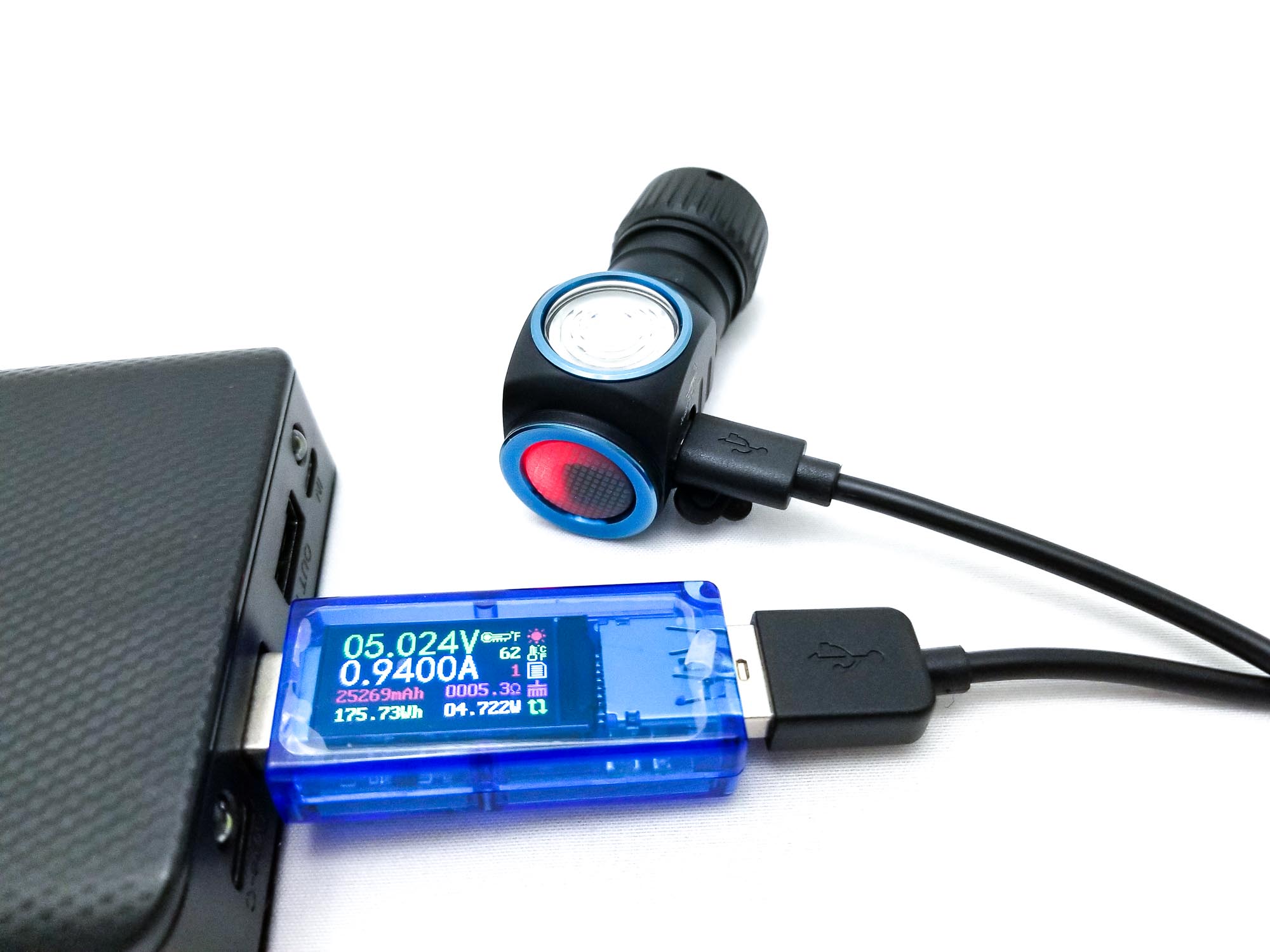
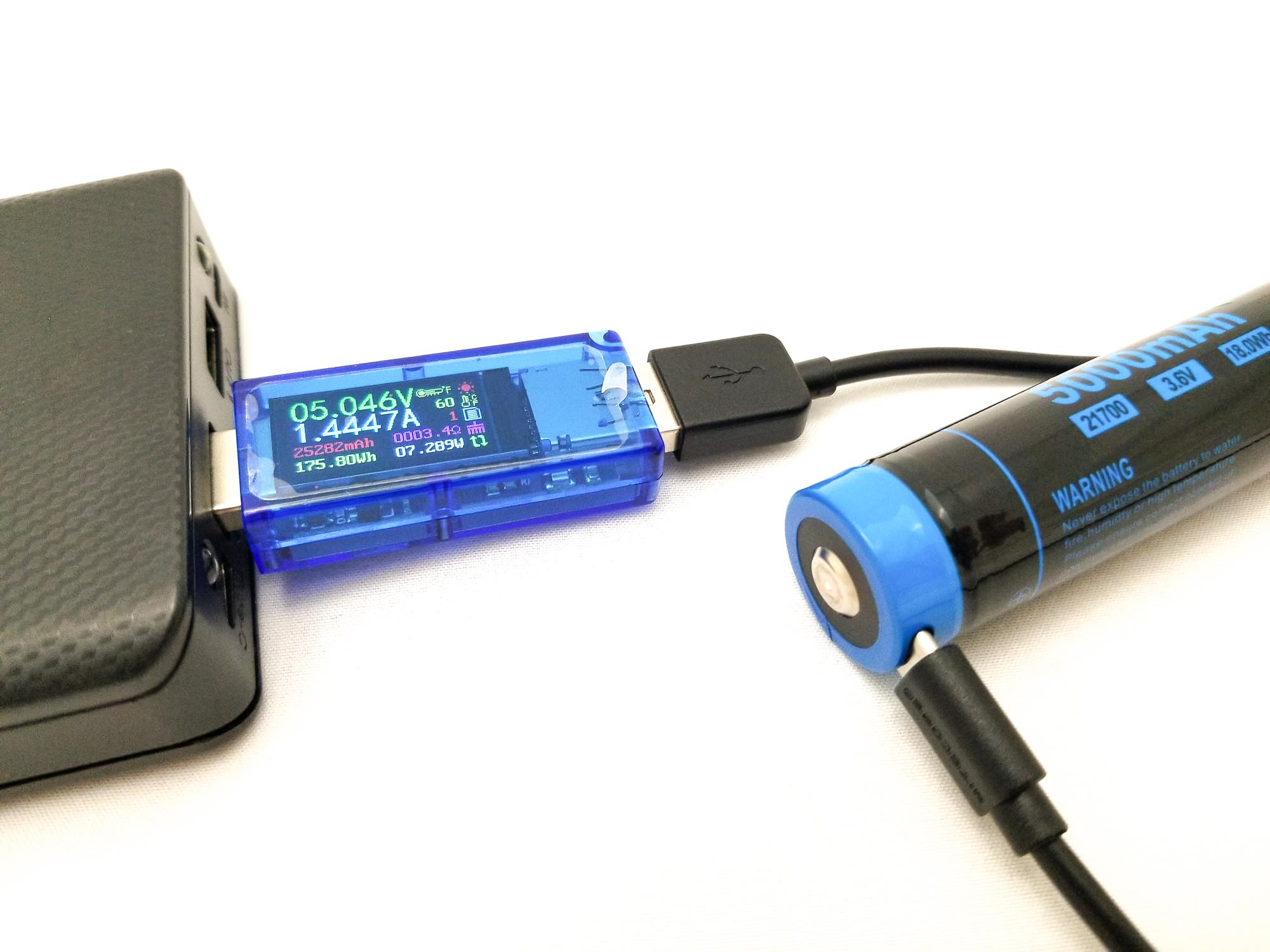
Performance test
Lumen measurements
Lumens are measured in my 50 cm integrating sphere with a Digi-Sense 20250-00 data logging luxmeter. The sphere has been calibrated with a Convoy S2+ measured to 260 Lumens and the figures are within 10% of actual. I used the included 700 mAh 16340 which was fully charged for the readings. Amps are measured with my Thisinde B18 Plus multimeter with 14 gauge wires on banana plugs.
| Mode | Amps at start | Specified | turn on | 30 sec | 10 minutes |
|---|---|---|---|---|---|
| Red | 110 mA | 15 | 23 lm | 23 lm | 22 lm |
| Eco | 13 mA | 5 | 4.9 lm | 4.9 lm | – |
| Low | 36 mA | 25 | 21 lm | 21 lm | – |
| Medium | 198 mA | 130 | 127 lm | 125 lm | 124 lm |
| High | 638 mA | 400 | 373 lm | 373 lm | 369 lm |
| Turbo | 3.20 A | 1100 | 898 lm | 824 lm | 357 lm |
Parasitic drain:
- 18.5 µA
Battery Life: Runtime graphs
Runtimes are measured in my 50 cm integrating sphere with a Digi-Sense 20250-00 data logging luxmeter. The sphere has been calibrated with a Convoy S2+ measured to 260 Lumens and the figures are within 10% of actual. I used the included 700 mAh 16340 which was fully charged for the tests. I tested the red light, Medium, High, and Turbo.
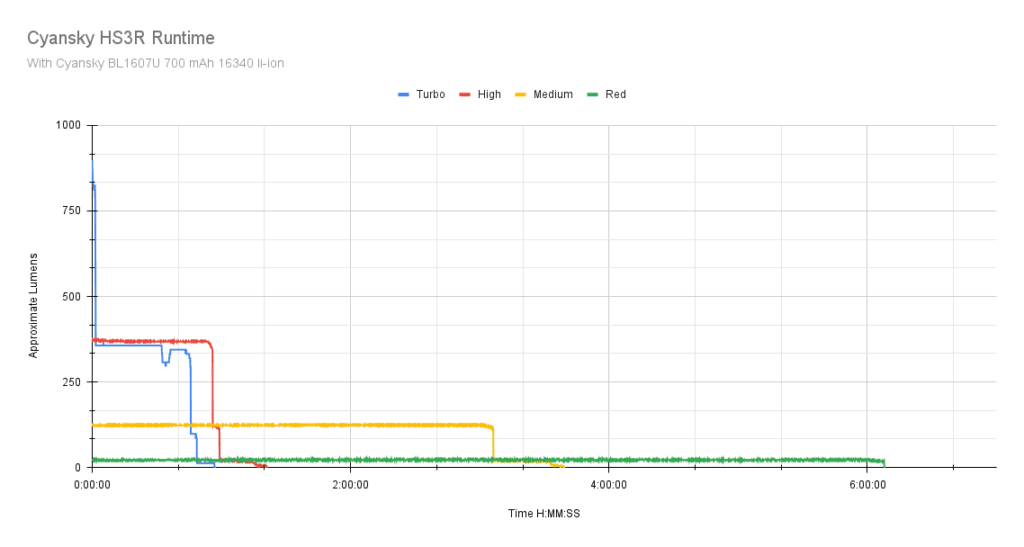
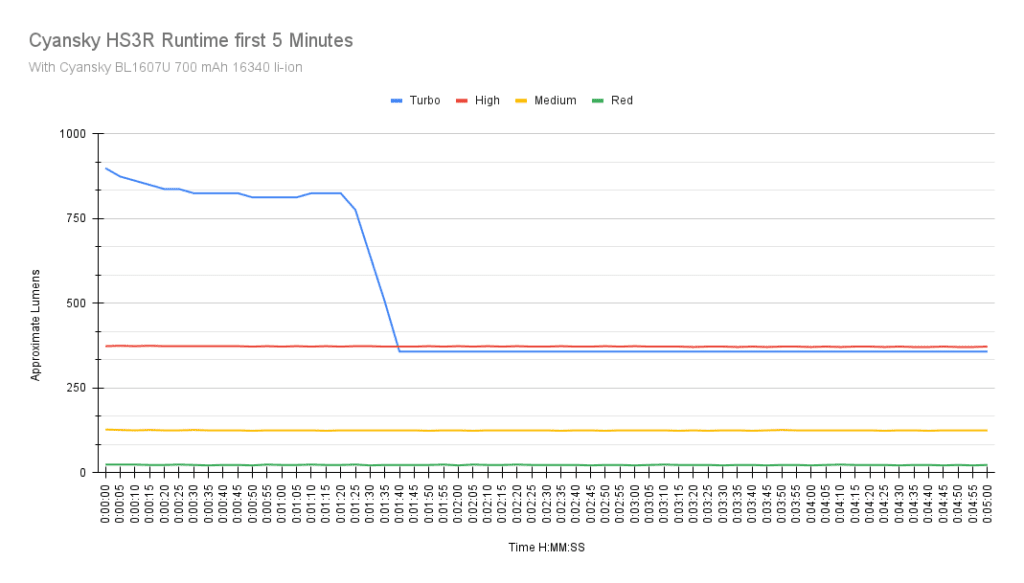
| Mode | Specified | Measured runtime (ANSI) | Time till shut off |
|---|---|---|---|
| Red | 7h | 6h 7min | 6h 7min |
| Medium | 3.5h | 3h 32min | 3h 39min |
| High | 1h | 1h 15min | 1h 21min |
| Turbo* | 45min | 48min 5s | 56min 40s |
The runtimes look good, and only the red mode didn’t meet Cyansky’s runtime spec. The light never got hot, and the outputs are nice and laminar, with constant brightness throughout the runtime. This is what separates cheap headlamps from the HS3R, a true fully regulated constant current driver. There wasn’t any thermal regulation nonsense either, but the Turbo step down seemed to be timed rather than temperature controlled. Even with the step down from 900 Lumens to what’s essentially High mode, it’s still plenty bright, and Turbo could be reactivated. The brightness drops very low before an abrupt shut down, with LVP blinks and a flashing red switch LED to remind you it’s time to charge the battery. The LVP blinks started about 15 minutes out from shut down, blinking 3 times every few minutes, so you get plenty of notice. The light was not usable after the tests, and the battery read 3.1 volts.
ANSI FL1 standards: The runtime is measured until the light drops to 10% of its initial output (30 seconds after turning on). This does not mean that the flashlight is not usable anymore. The last column shows how long the light actually works till it shuts off. If there is a + symbol, it means that the test was stopped at that particular point, but the light was actually still running. This happens on certain occasions, with certain drivers, firmware, or batteries.
Peak beam intensity and beam distance measurements
Beam distances are measured using a Uni-T UT383S luxmeter measured indoors at 5 meters with the fully charged included battery. Measurements taken at 30 seconds.
| Mode | Specified | Candela measured | Meters | Yards |
|---|---|---|---|---|
| Red | 4 cd | 50 cd | 14 | 16 |
| Eco | 25 cd | N/A | – | – |
| Low | 100 cd | 50 cd | 14 | 16 |
| Medium | 506 cd | 475 cd | 44 | 48 |
| High | 1406 cd | 1475 cd | 77 | 84 |
| Turbo | 4566 cd | 3375 cd | 116 | 127 |
I measured the red mode at 2 meters since it didn’t show up at 5 meters. Eco was too low to measure at 5 meters also. This is plenty of reach for a peanut-sized headlamp and good enough for most tasks you’d grab it for.
Extra info: Peak beam distance according to ANSI FL1 standards: The calculated value of distance in meters at which the flashlight produces a light intensity of 0.25 lux. (0.25 lux is about the brightness of a full moon shining on an object). Columns, Meters and Yards show rounded numbers.
Beamshots
I compared the HS3R to some other headlamps and right angle lights. Photos taken with my Samsung Note 8. For the indoor shots, the hallway is about 12 meters long, and the distance to the map on the wall is about 4.5 meters. For the outdoor photos, the fence is about 40 meters away. The camera is set to 0.3s ISO 200 and 5000K WB for the outdoor shots, and 1/15s, ISO 100 and 5000K WB for the indoor shots.
Beamshots of the following flashlights compared:
- Boruit D10 headlamp
- Brinyte HL16
- Fireflies PL47G2
- Fireflies PL47G2 Mu
- Cyansky HS6R headlamp
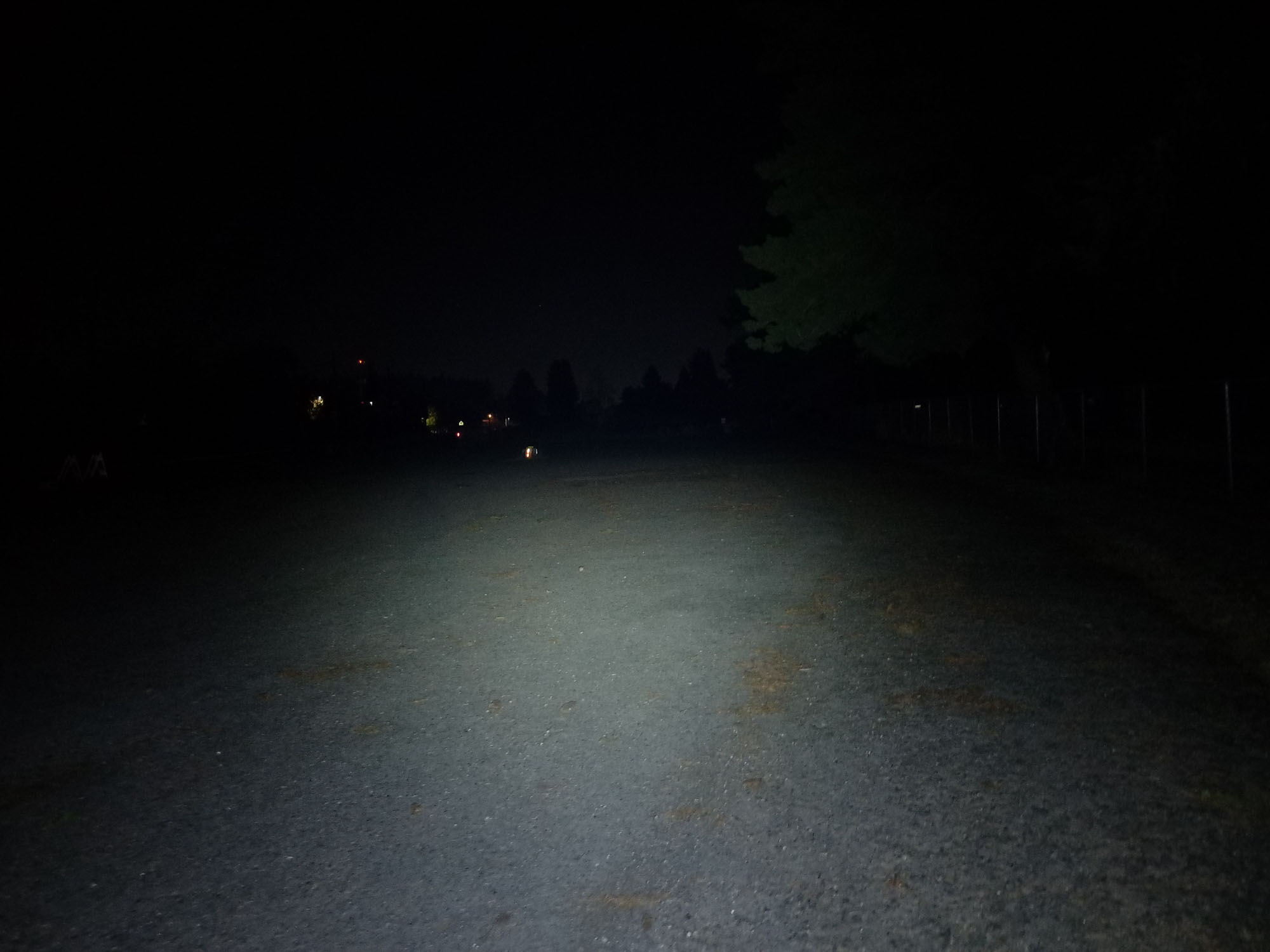




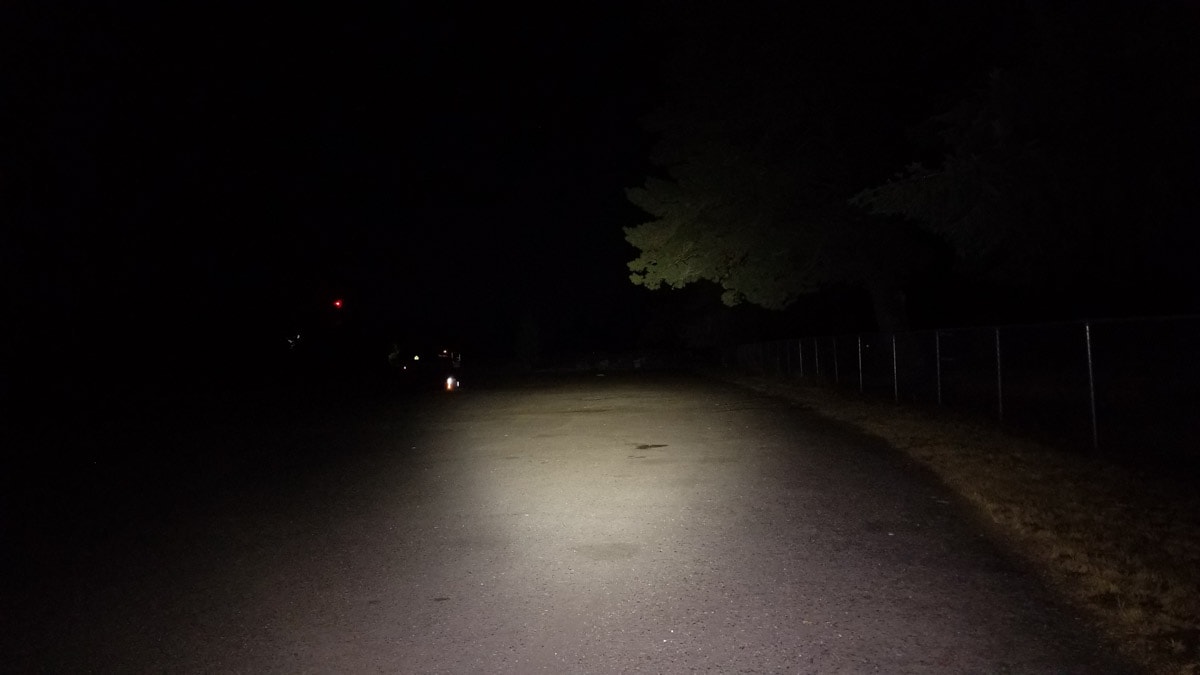



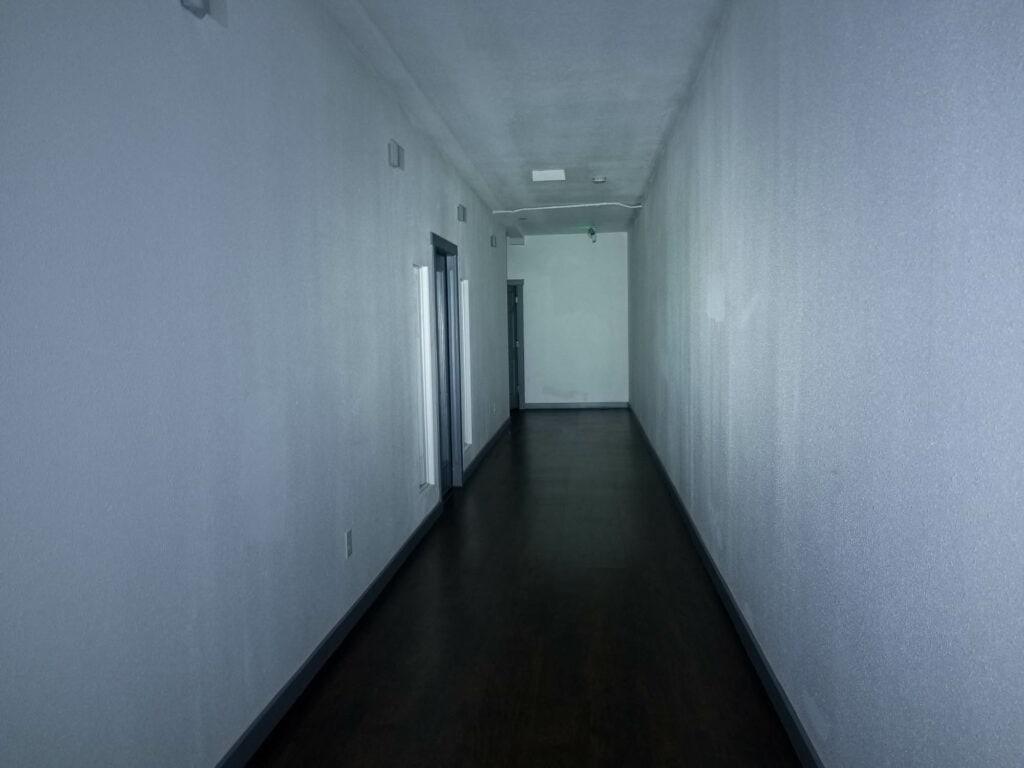



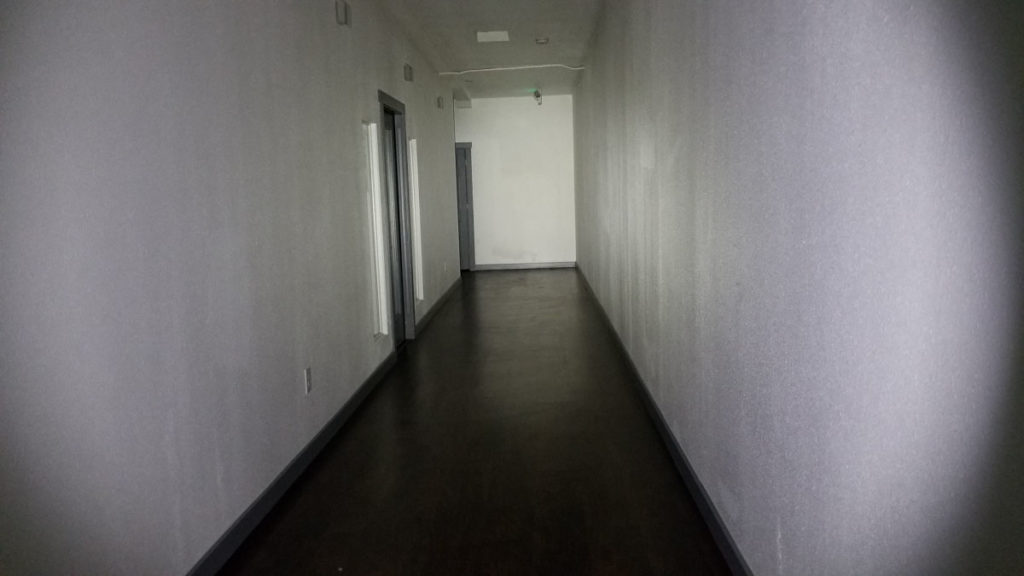


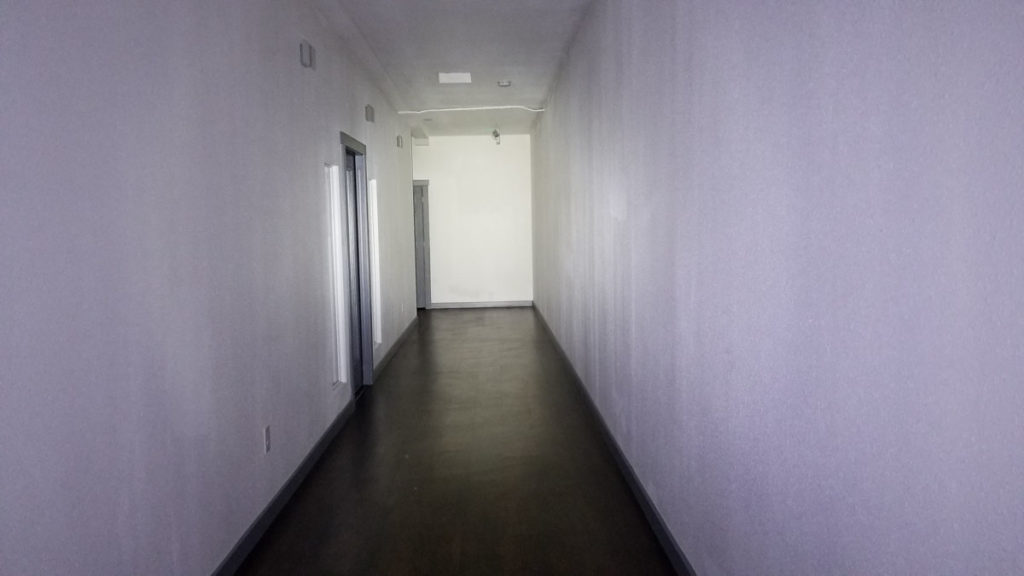

Disclaimer: This flashlight was sent to me for review at no cost by Cyansky. I have not been paid to review, nor have I been holding back on problems or defects.
Final Verdict
Pros
- Super small
- Outstanding build quality
- Very lightweight
- Fully regulated driver with good output
- Quick type C onboard charging
- Comfortable to wear
- Nice beam
Cons
- UI is convoluted
- CR123A compatibility is limited
- Headband adds a bit of weight
- Missing glass lens in front of TIR optic
Explanation on star ratings:
1: Avoid: a match would be a better choice – 2: Poor: significant defect or issues; almost unusable – 3: Average: some defects or issues; but still usable 4: Good: recommended (minor issues) – 5: Great: highly recommended

5 stars: ★★★★★
The Cyansky HS6R I reviewed was a great headlamp. Yah it was a bit porky and bulky, and didn’t perform to spec, but for a first effort from a fledgling brand (at the time), I call it a win. With the release of the HS5R, Cyansky proved it could build a nice right-angle headlamp, and the HS3R further proves they can build a nice small headlamp/right-angle light too. After spending a few weeks toting around the HS3R, I’ve found it to be highly versatile and a nice performer to boot. I really appreciate the solid, high quality construction, the beam is very versatile, and the magnetic tailcap adds usefulness. I also like the type C onboard charging (and the fact the battery has charging), and although the CR123A compatibility is there, it’s a bit of an afterthought and would be best left to emergency use only. It’s also comfortable to wear, and as an EDC, it’s do-able too. The driver is well regulated and provides constant brightness throughout the runtimes.
The UI, while simple to use, needs some help. I don’t like the fact you have to turn the light off, then back on to access the red mode and Eco mode, but it’s nice to not have it as part of the regular mode rotation. I also don’t like the mode memory for the red and Eco modes either. The headband, while comfortable, adds a little too much weight with the stainless steel mounting plate. Cyansky, how about a strong plastic mount? Despite the UI quirkiness, I’m still giving the Cyansky HS3R 5 stars. I can’t fault it much for the CR123A compatibility, and despite the headband adding weight, it’s still very light.
Overall, this is an extremely versatile little light. It’s impressively bright for its size and would be a most-welcome companion on a lot of activities (or adventures). I will definitely be reaching for the HS3R a lot now, maybe more than my FWAA.
Buy Cyansky HS3R here
1lumen selects and reviews products personally. We may earn affiliate commissions through our links, which help support our testing.